Te Koroneihana | Coronation
Celebrating Te Atairangikaahu, Māori Queen.
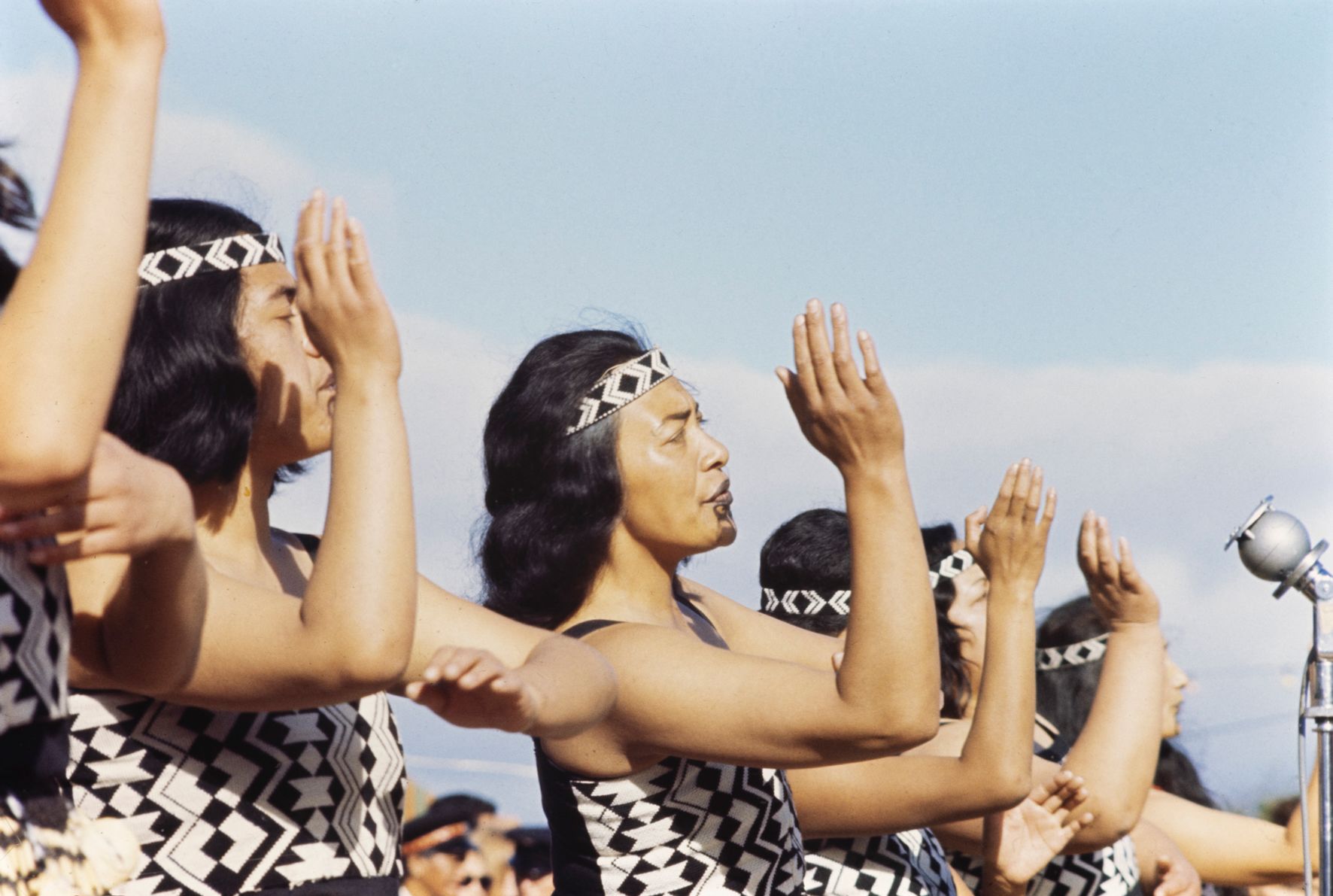
Te Koroneihana | Coronation
May 1969
Each year, people gather in Ngāruawāhia, Aotearoa New Zealand to celebrate the leader of the Kīngitanga (Māori King Movement).
May 1969 was the third anniversary of the first woman to lead the Kīngitanga, Te Atairangikaahu.
Tūrangawaewae marae, the official residence of the queen, buzzed with energy as more than six thousand people came together for ceremonies of welcome and mourning, speeches, community discussions, performances, and sports.
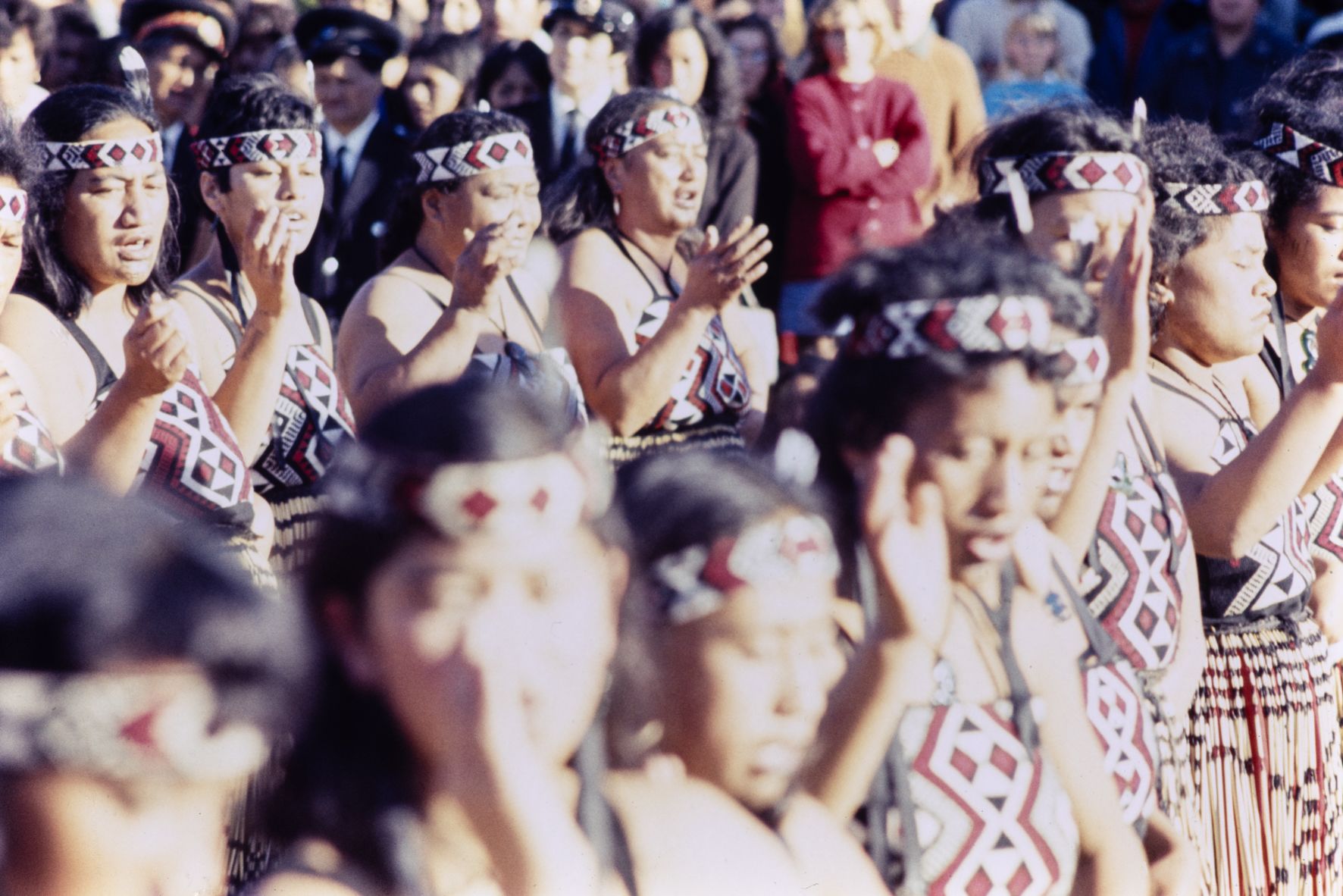
Axel and Roslyn Poignant
Axel Poignant, a photographer, and Roslyn Poignant, an anthropologist, visited te koroneihana in 1969. The couple were touring the North Island of Aotearoa New Zealand as part of a longer research trip around the Pacific. They bequeathed more than 17,500 photographs to MAA in 2021, including about 300 from te koroneihana. All of the Poignant images are being catalogued and digitised and can be seen and downloaded on the MAA catalogue here.
Axel’s photographs from te koroneihana tell the story of the coronation celebration and call attention to individual people and moments within the bustle of crowds and performances. They are full of Axel’s characteristic attention to life, movement, and relationships between people. The information in this story comes from Roslyn’s notes alongside other sources including by Māori writers (see Find out More).
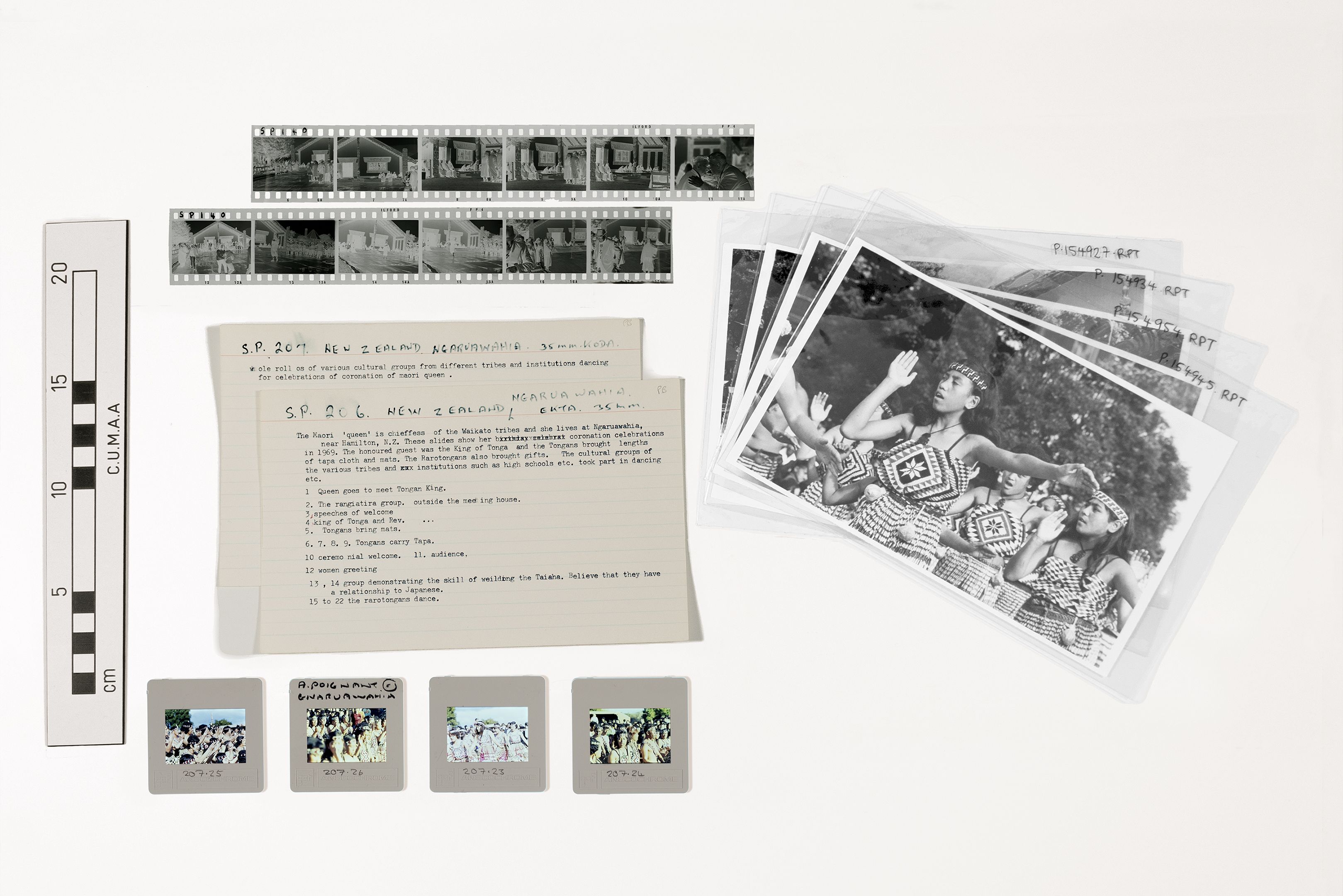
Some of Axel's prints, colour transparencies, and black and white negatives from the celebrations. Roslyn’s catalogue cards identify these photographs as from te koroneihana, 1969. This is a composite image. The negatives and transparencies have been photographed separately using a light box. MAA T.150595.RPT - T.150598.RPT; P.154927.RPT; P.154934.RPT; P.154954.RPT; P.154945.RPT; N.159437.RPT-N.159448.RPT.
Some of Axel's prints, colour transparencies, and black and white negatives from the celebrations. Roslyn’s catalogue cards identify these photographs as from te koroneihana, 1969. This is a composite image. The negatives and transparencies have been photographed separately using a light box. MAA T.150595.RPT - T.150598.RPT; P.154927.RPT; P.154934.RPT; P.154954.RPT; P.154945.RPT; N.159437.RPT-N.159448.RPT.
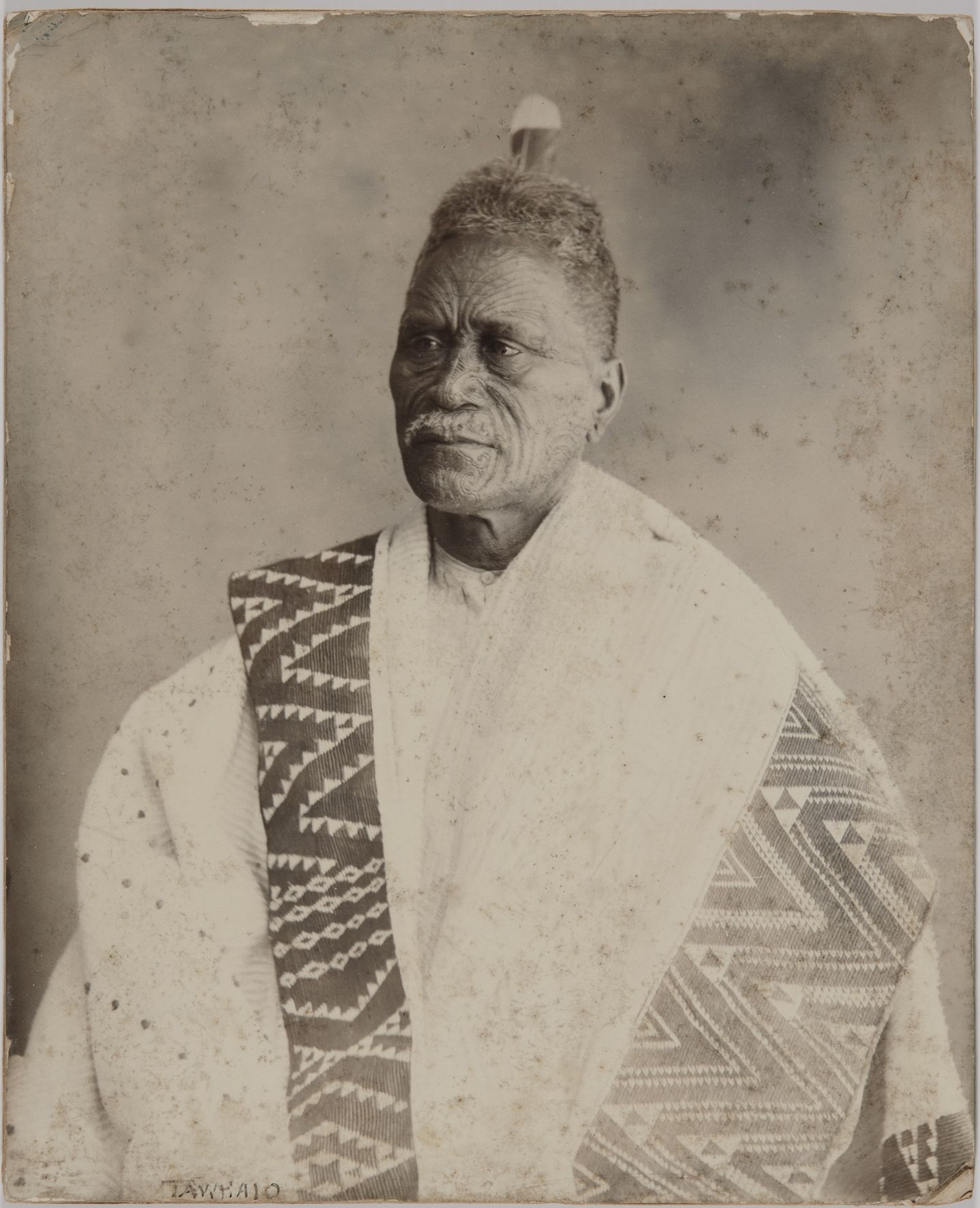
Portrait of Tūkāroto Tāwhiao, the second Māori King (served 1860-1894). MAA P.70194.ACH2
Portrait of Tūkāroto Tāwhiao, the second Māori King (served 1860-1894). MAA P.70194.ACH2
Kīngitanga | Māori King Movement
Historically, Māori did not have a monarchy. Different iwi (groups) are independent and have their own leadership. However, in 1858 leaders in the North Island appointed a king to unite Māori and protect their land from European settlers.
This became more urgent during the second King, Tūkāroto Tāwhiao’s reign in the 1860s. Land disputes between Māori and European settlers and the British invasion of the Waikato region led to war between Māori and British forces.
Since the Kīngitanga was established, its leaders have represented Māori in Aotearoa New Zealand and around the world. However, they do not govern Māori and not all Māori are associated with the movement. It is particularly influential in the Waikato region, where te koroneihana takes place.
Te Atairangikaahu, Māori Queen
1969 was the third anniversary of the coronation of Te Atairangikaahu. Also known as Piki Mahuta, she was the great-great-great granddaughter of the first King, Pōtatau Te Wherowhero.
Serving as queen for more than forty years, she advocated for Māori rights, language, and cultural practices.
Here, she is sitting outside Māhinaarangi wharenui (meeting house) during the celebrations with her family, community members and honoured guests.
MAA P.154984.RPT
Te Atairangikaahu wearing a prestigious kahu kiwi (kiwi feather cloak).
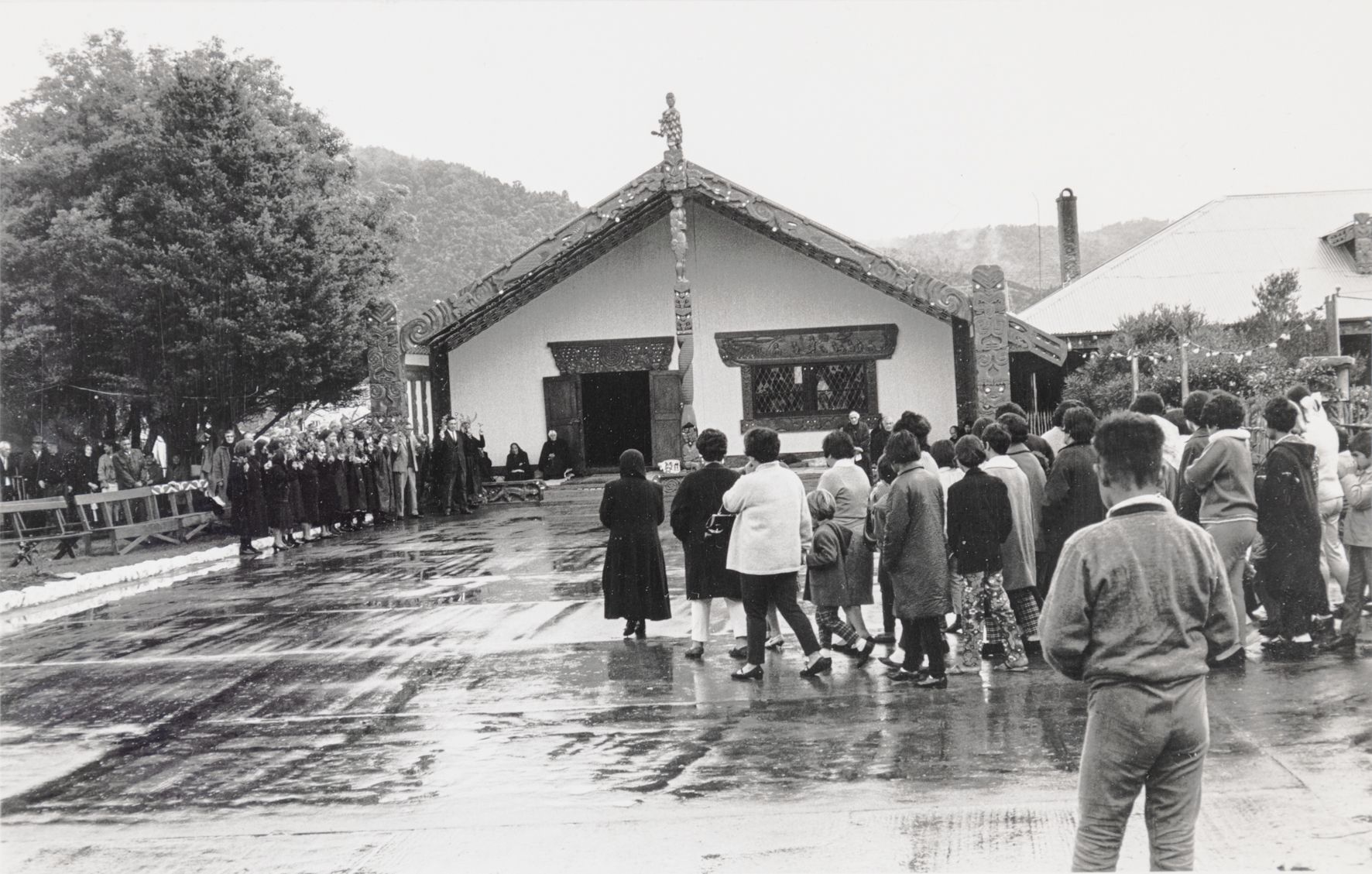
People gathering on Tūrangawaewae marae in front of Māhinaarangi wharenui. MAA P.154925.RPT
People gathering on Tūrangawaewae marae in front of Māhinaarangi wharenui. MAA P.154925.RPT
Gathering on the Marae
As well as celebrating Te Atairangikaahu, te koroneihana 1969 was a chance for Māori associated with the Kīngitanga and their guests to gather on Tūrangawaewae marae. A marae is an area of ground which forms the centre of Māori community life. It is usually surrounded by buildings including a wharenui (meeting house).
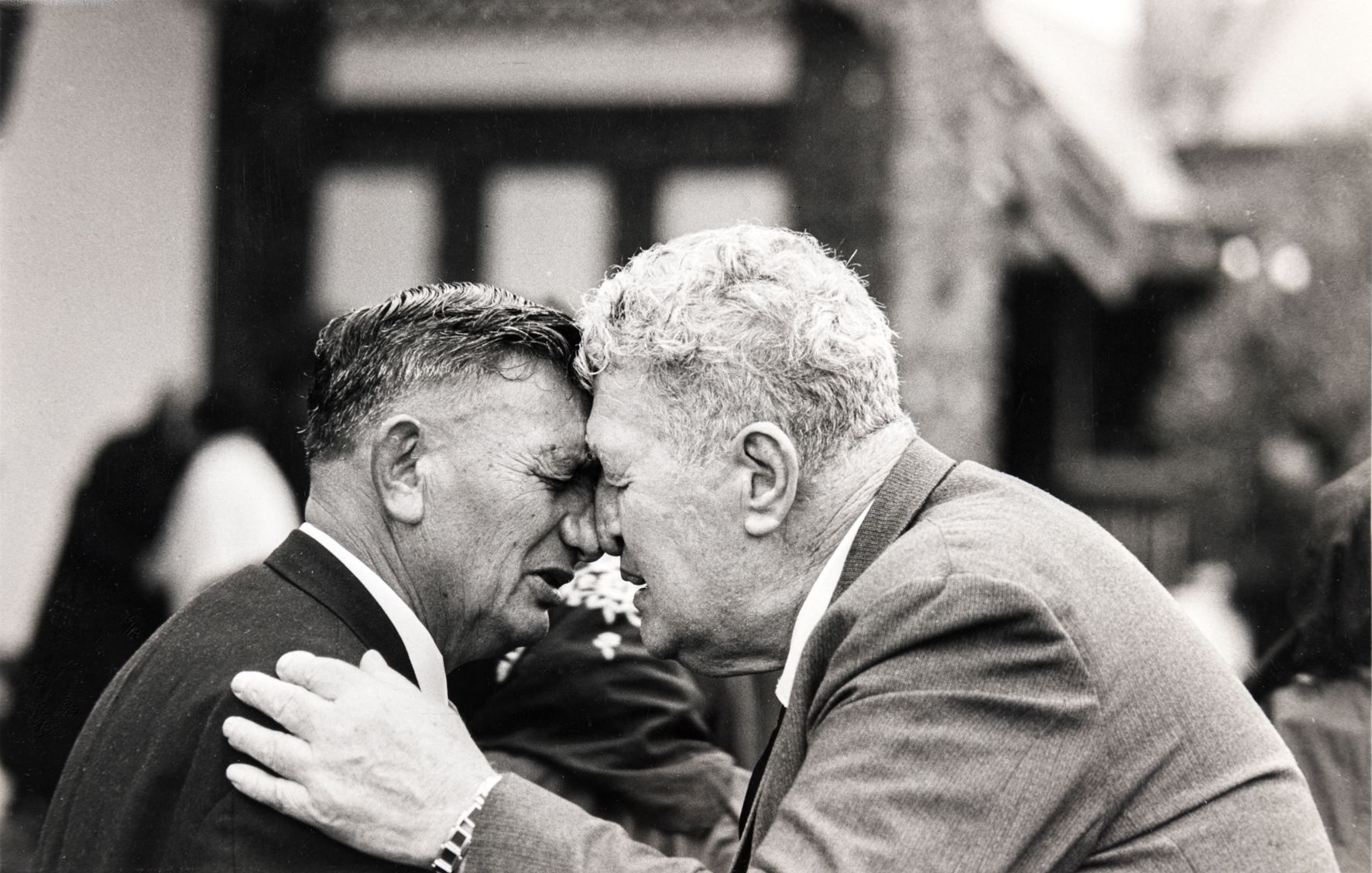
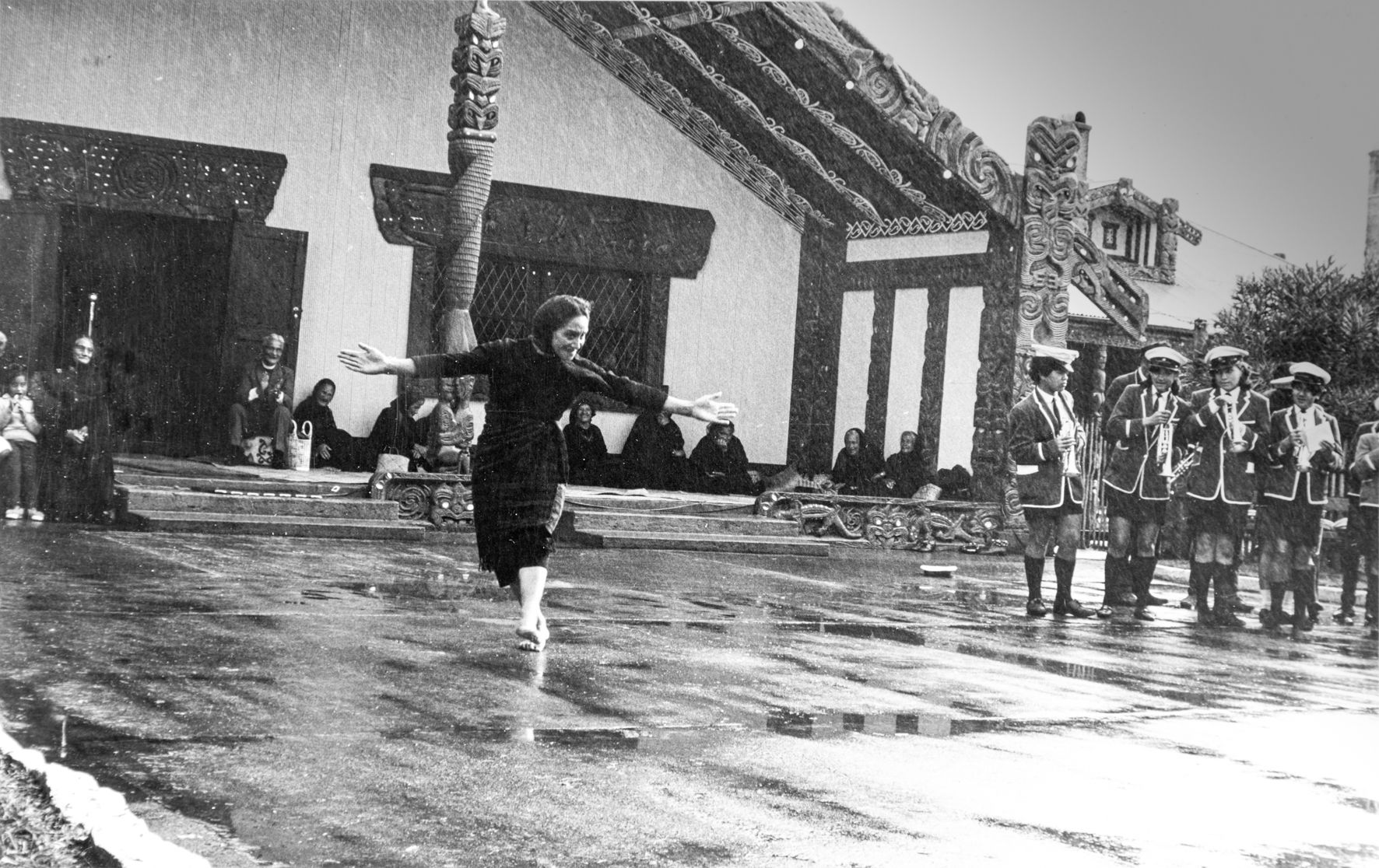

Two men greeting by hongi (sharing of breath). MAA P.154929.RPT
Two men greeting by hongi (sharing of breath). MAA P.154929.RPT

A kuia (elder woman) welcoming people to the marae. Members of a high school band are standing beside her. MAA P.154931.RPT
A kuia (elder woman) welcoming people to the marae. Members of a high school band are standing beside her. MAA P.154931.RPT
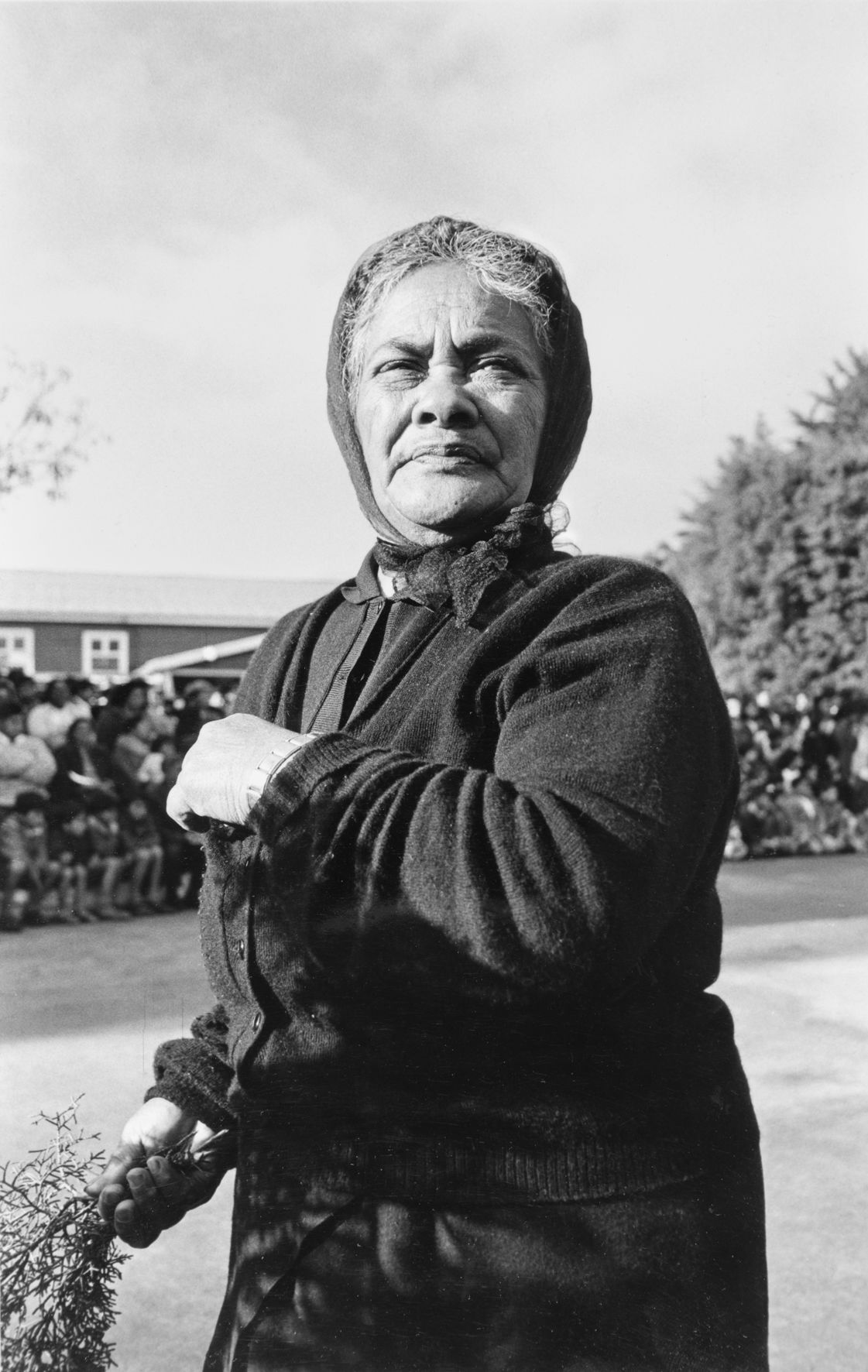
A kuia (elder woman) welcoming King Tupou IV and his family to the marae. MAA P.154964.RPT
A kuia (elder woman) welcoming King Tupou IV and his family to the marae. MAA P.154964.RPT
Pōwhiri | Welcome
Visitors to Te Atairangikaahu’s celebrations came from all over Aotearoa New Zealand as well as from other countries. The guests of honour were King Tāufa'āhau Tupou IV of Tonga and his family.
The process of welcoming visitors to a marae is called pōwhiri and can include karanga (calls), wero (a challenge), and whaikōrero (speeches), as well as songs and dancing. Each element of the pōwhiri is about building relationships between visitors and hosts. Axel’s photographs show the connections being made by the pōwhiri.
Wero | Challenge
The pōwhiri to welcome King Tupou IV included a wero. During the wero, a challenger placed a rākau (baton) in front of the king who received it as a sign that he was visiting in peace.
King Tupou IV being invited onto Tūrangawaewae Marae. MAA T.150554.RPT
The challenger carrying a taiaha (long fighting staff). His movement across the marae shows in the swing of his korowai (tasselled cloak).
King Tupou IV, wearing a dark jacket, walking across the marae accompanied by a Māori host. Kuia (elder women) are standing in a line to greet him.
Click on the images below to see the next stages of the wero.
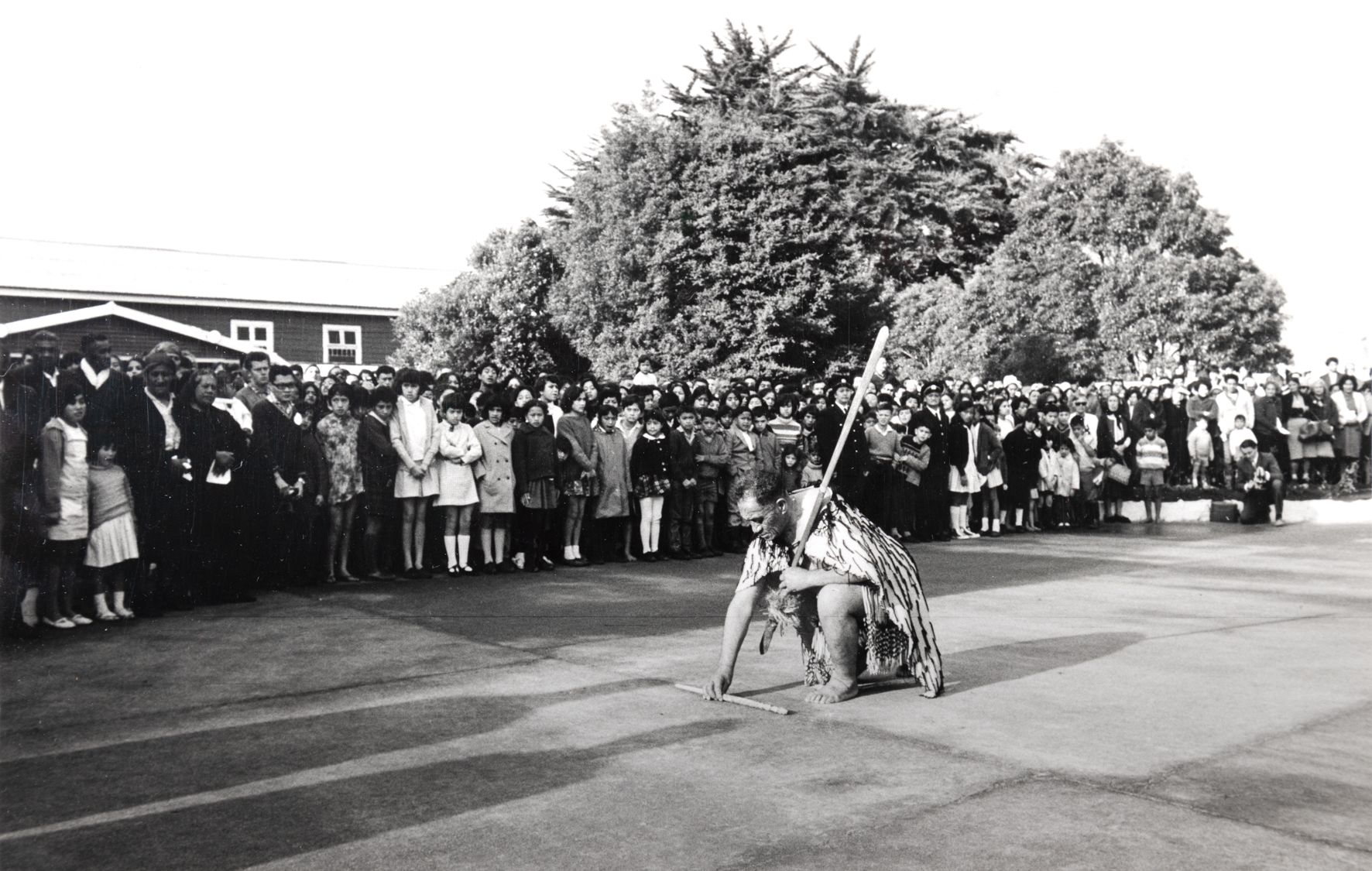
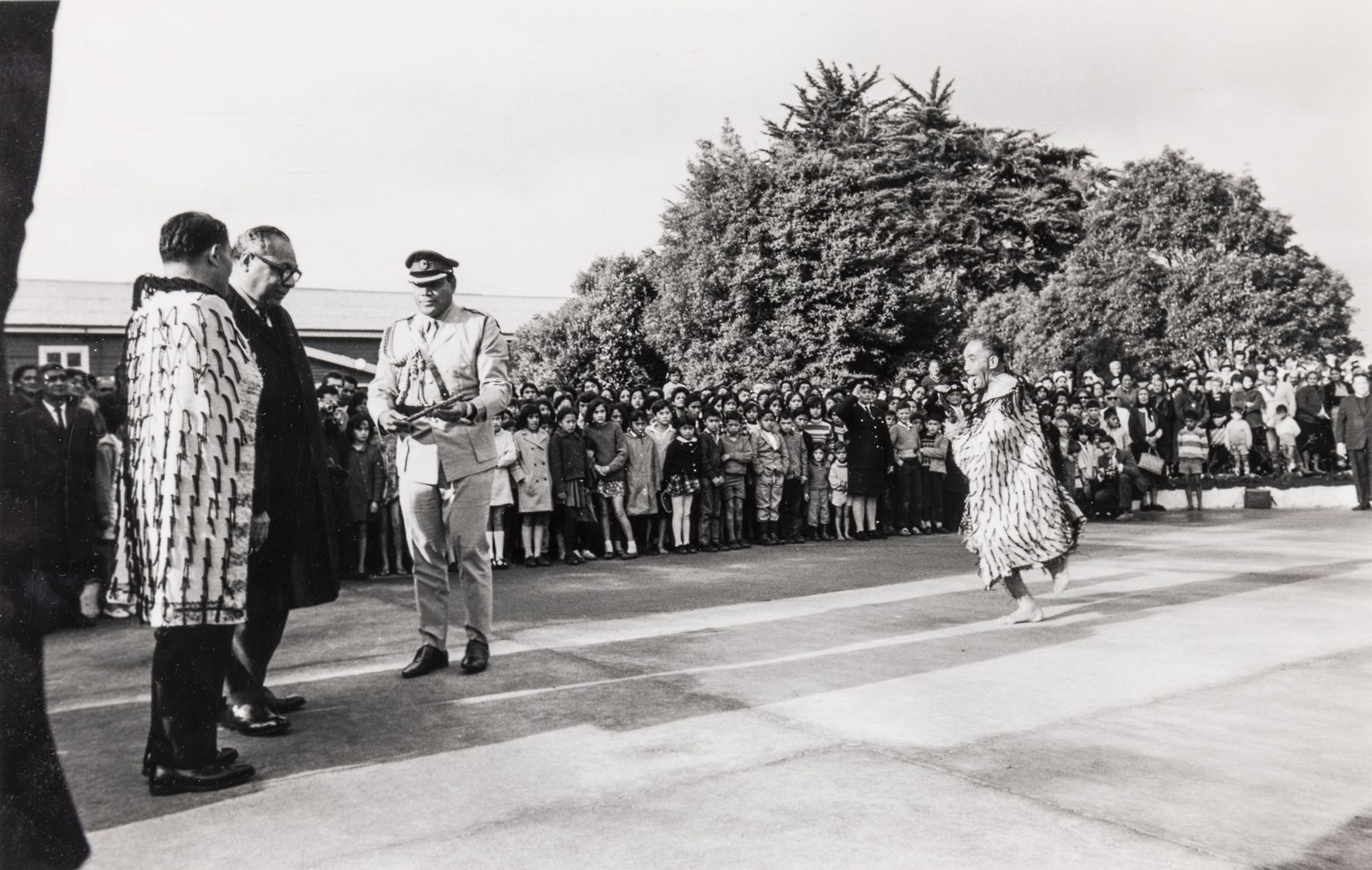
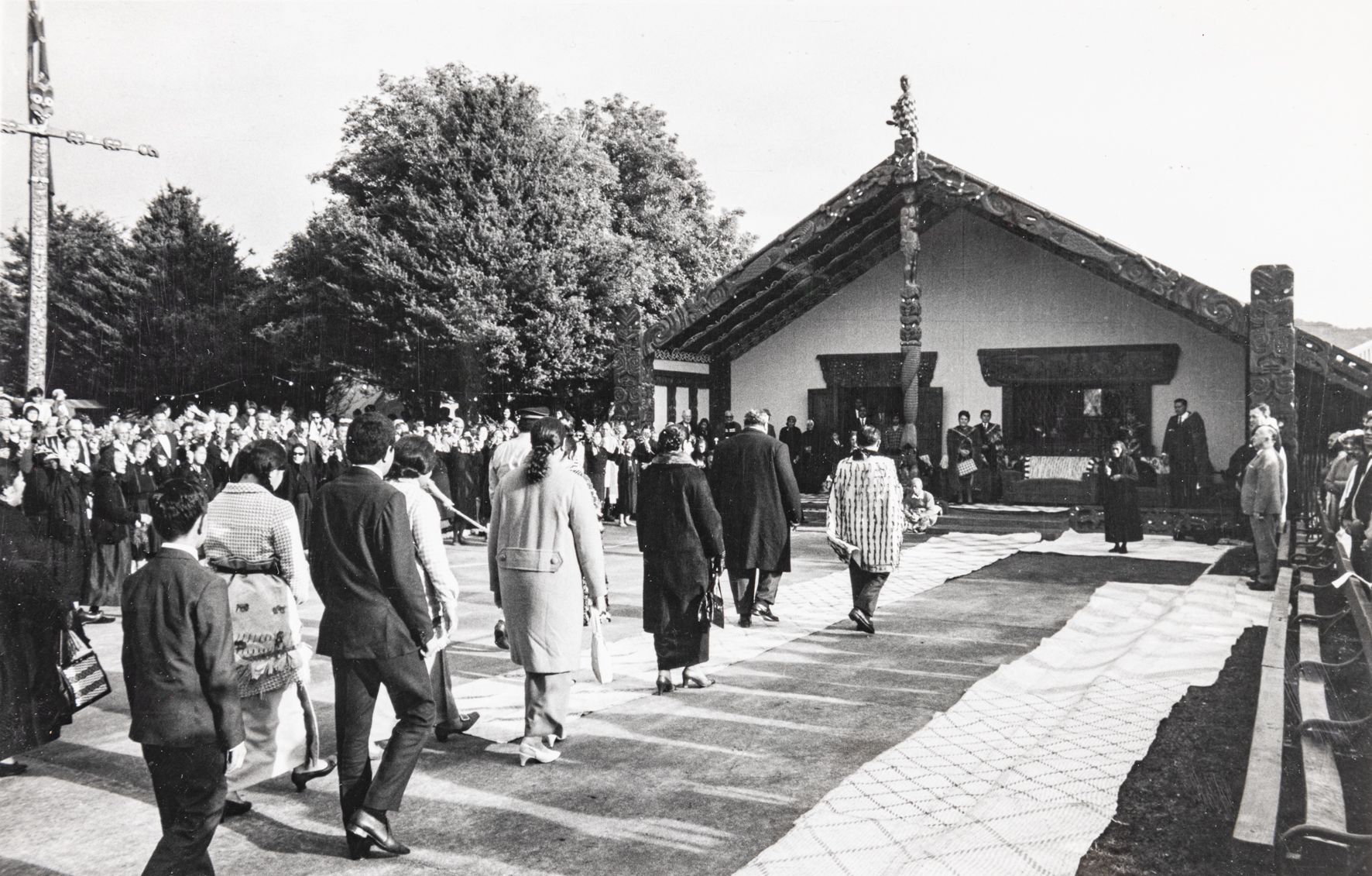

The challenger placing the rākau in front of King Tupou IV. MAA P.154965.RPT
The challenger placing the rākau in front of King Tupou IV. MAA P.154965.RPT

King Tupou IV receiving the rākau. MAA P.154966.RPT
King Tupou IV receiving the rākau. MAA P.154966.RPT

King Tupou IV and his family walking across the marae toward Te Atairangikaahu, who is standing to greet them. MAA P.154969.RPT
King Tupou IV and his family walking across the marae toward Te Atairangikaahu, who is standing to greet them. MAA P.154969.RPT
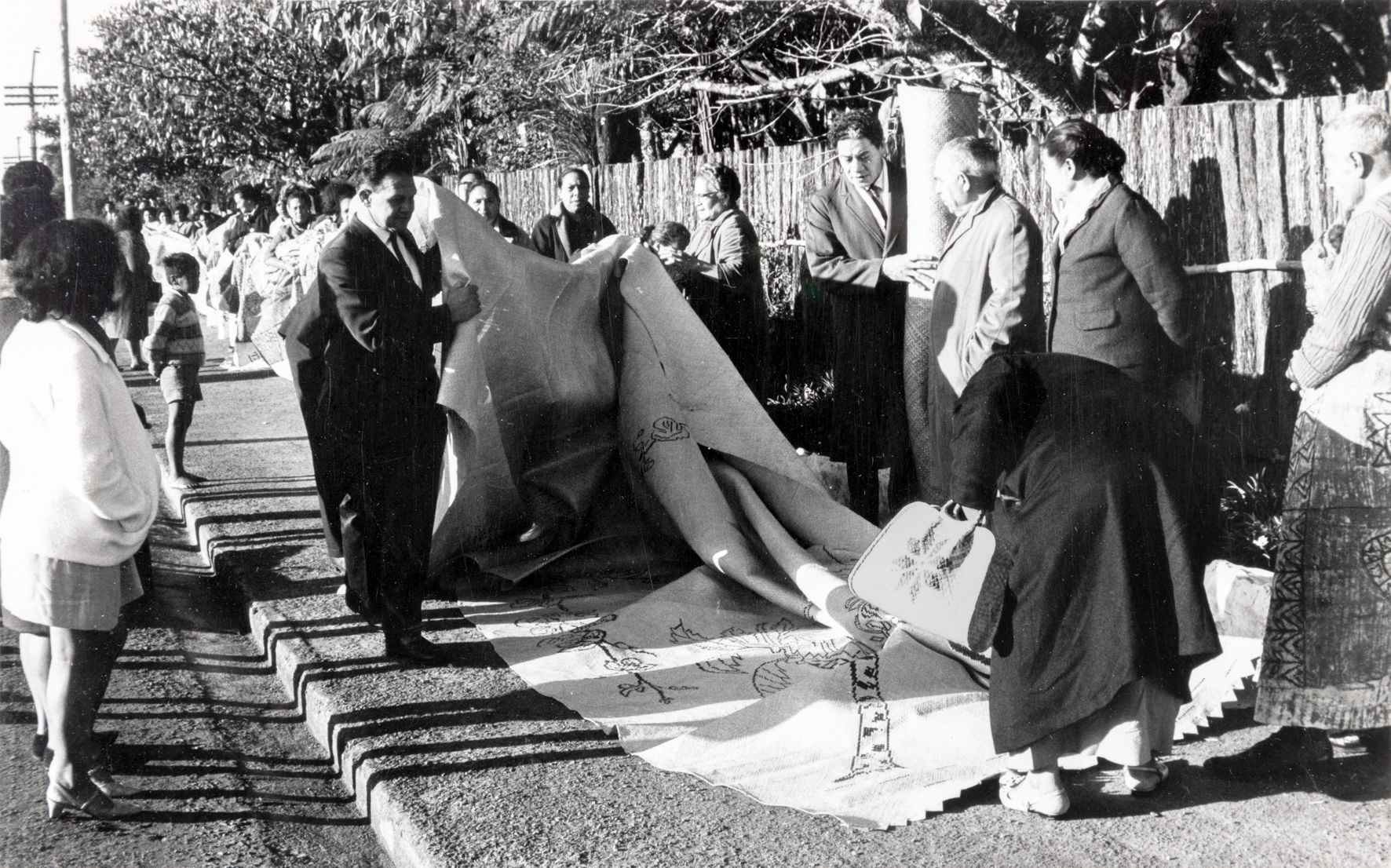
People lining up outside Tūrangawaewae marae to carry woven mats as part of the koha. The man on the right of the photograph is wearing a ta'ovala (wrapped kilt) made of ngatu (bark cloth). MAA P.154963.RPT
People lining up outside Tūrangawaewae marae to carry woven mats as part of the koha. The man on the right of the photograph is wearing a ta'ovala (wrapped kilt) made of ngatu (bark cloth). MAA P.154963.RPT
Koha | Gift
Guests to a marae often give a gift to their hosts called a koha. Like other parts of the pōwhiri, this gift is an important part of building relationships. The guests from Tonga brought large pieces of decorated ngatu or tapa (bark cloth) and woven mats.
These would have been made by hand and decorated with painted or woven designs. Axel's photographs show how many people it took to carry them!
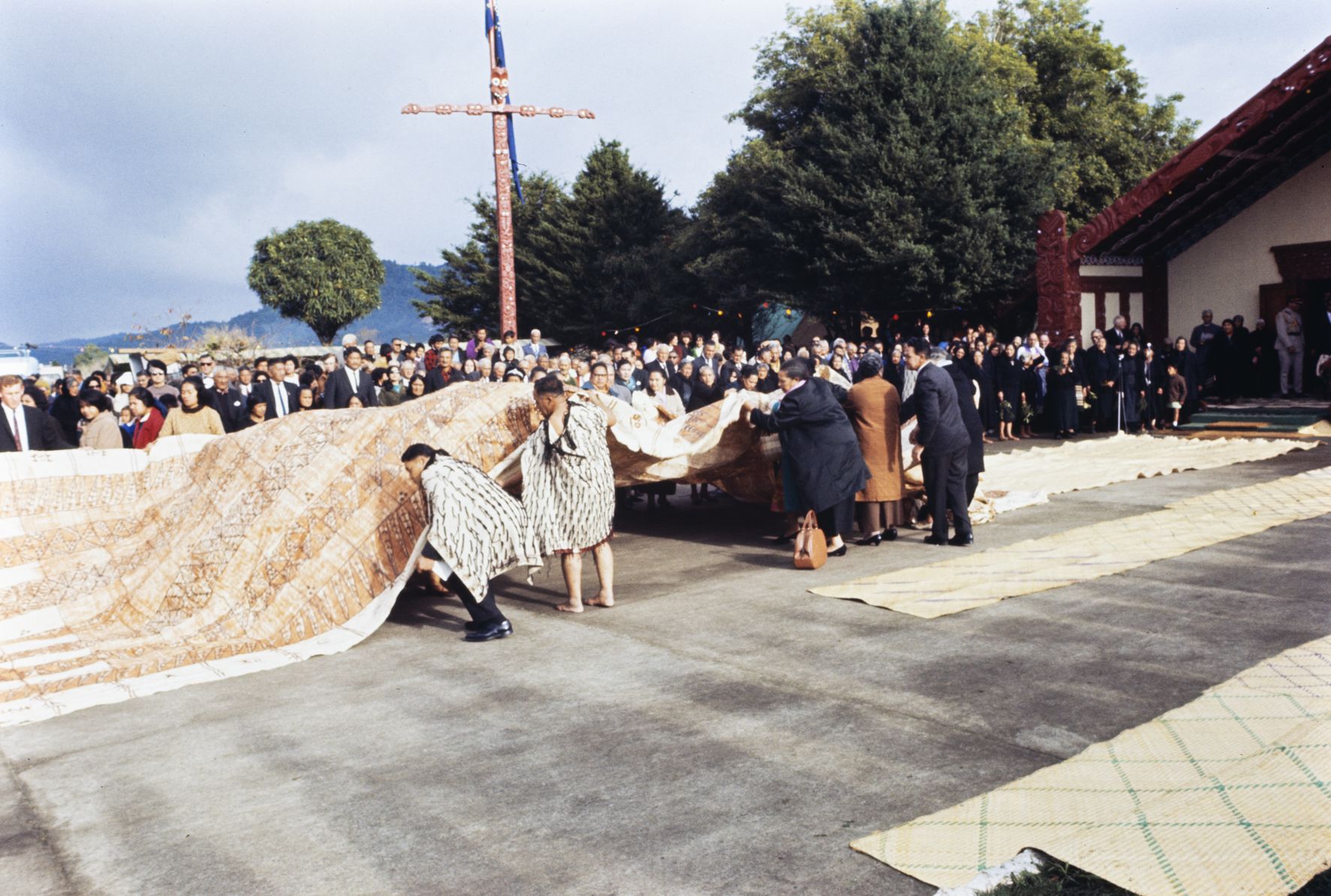
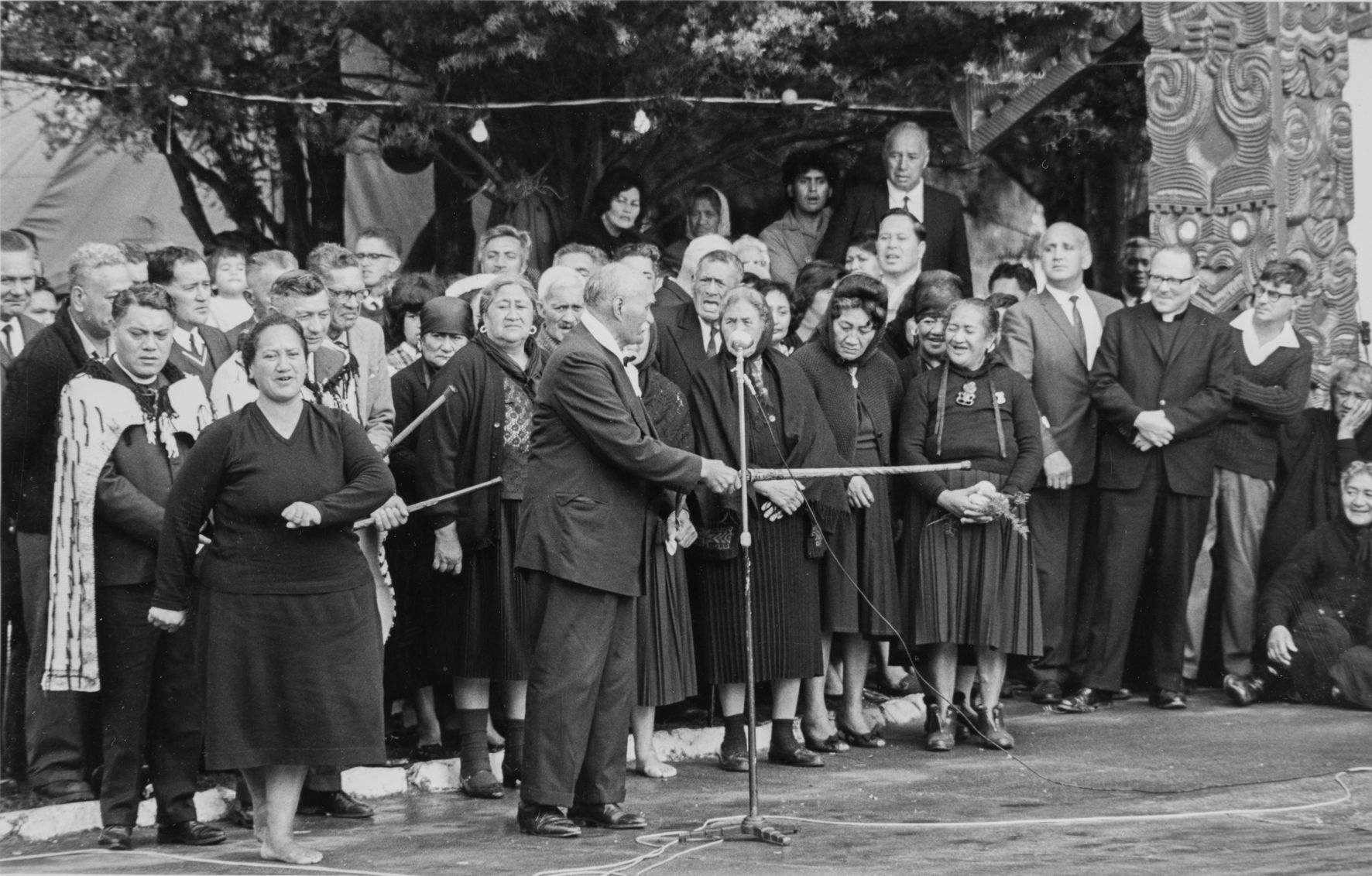
MAA P.154972.RPT
MAA P.154972.RPT
Whaikōrero | Speeches
Speakers discussed the relationships between Māori and their guests through whaikōrero (formal speeches).
In this photograph, a kaikōrero (speaker) is speaking to hosts and guests on the marae. He is holding a tokotoko (orator’s carved staff).
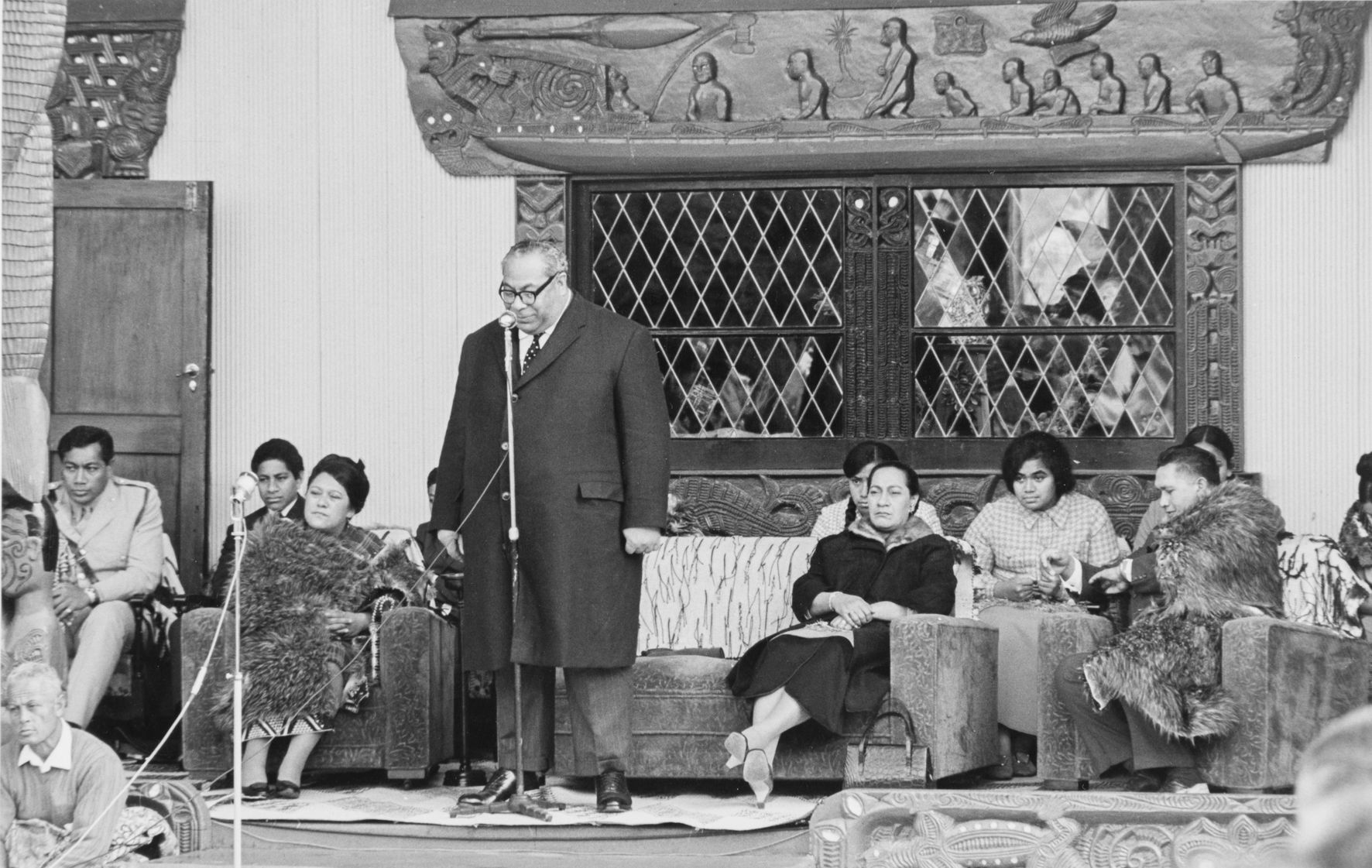
MAA P.154975.RPT
MAA P.154975.RPT
King Tupou IV speaking in response to the whaikōrero outside Māhinaarangi wharenui. Te Atairangikaahu is sitting on the left and Halaevalu Mata'aho 'Ahome'e, King Tupou’s wife, on the right.
Kapa Haka
The celebrations continued throughout the weekend. They included kapa haka, a range of song, dance, and spoken word performances. Roslyn noted that the performers came from different community groups and schools.
Axel’s photographs of the kapa haka performances show performers from different groups and of different ages, emphasising their skills, knowledge, and energy. Mauri, the Māori concept for the force and vitality of life, flows through kapa haka and performers. Axel’s photographs offer a brief glimpse of the mauri at te koroneihana in May 1969.
This photograph shows a kapa haka group performing. They are wearing piupiu (skirts) and have painted moko (tattoos) on their faces.
Axel’s photographs show the range of expressions on their faces, which convey emotion and meaning through the performance.
MAA P.154995.RPT
These performers are wearing piupiu made from flax that has been dried and rolled. The piupiu move with the performers, emphasising the mauri (life force) of the haka.
These performers have painted moko on their faces. Tā moko is the practice of Māori tattooing which became less socially acceptable as a result of colonial influences in the nineteenth century. Since the 1990s, the practice of tā moko has been revitalised. Many of these performers would have been too young for a tattooed design, though!
The strong expressions on these boys' faces are part of the haka. Kapa haka performances often use a range of expressions to convey meaning and tell stories.
Click on the images below to see more moments from these performances.
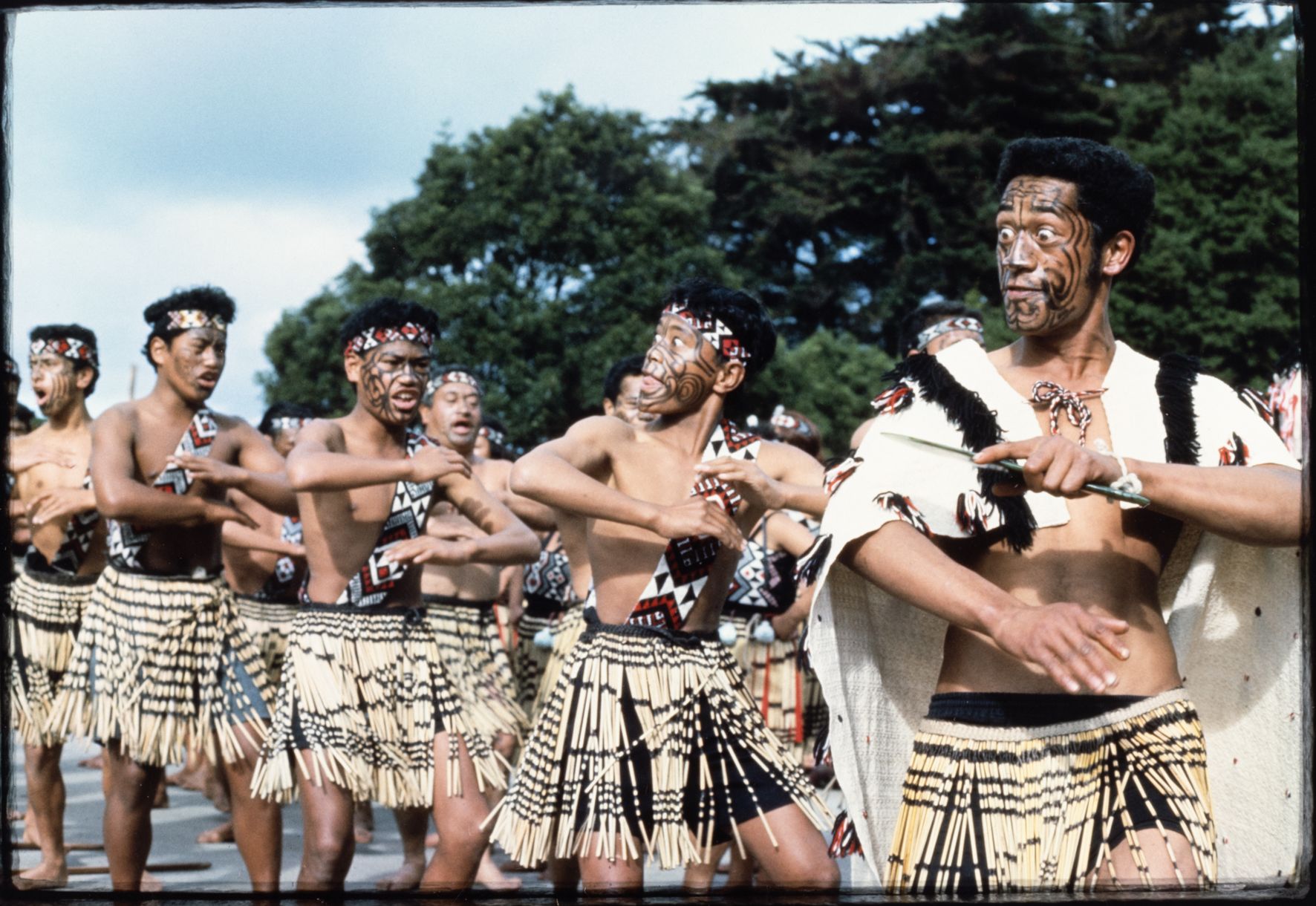
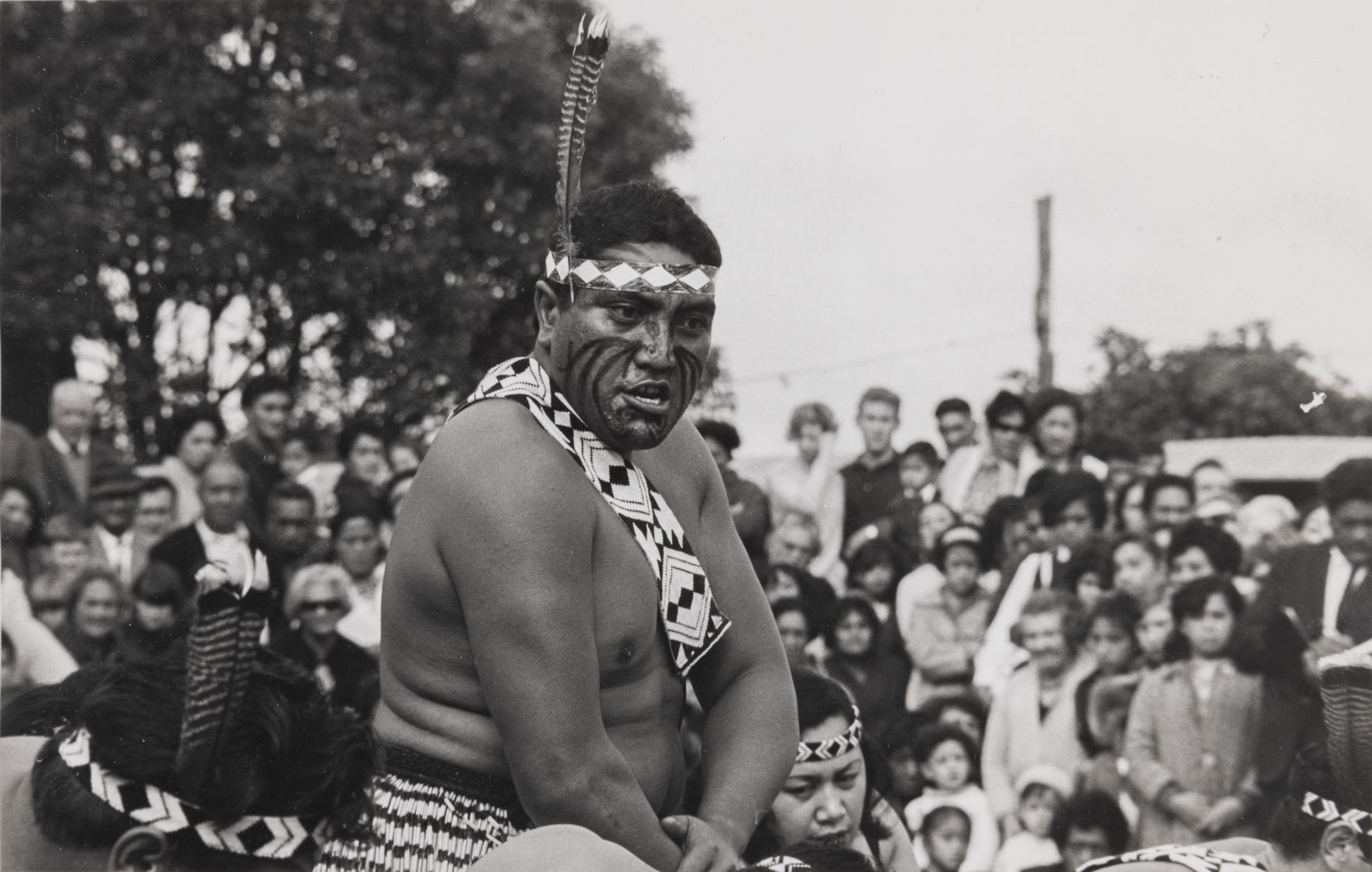
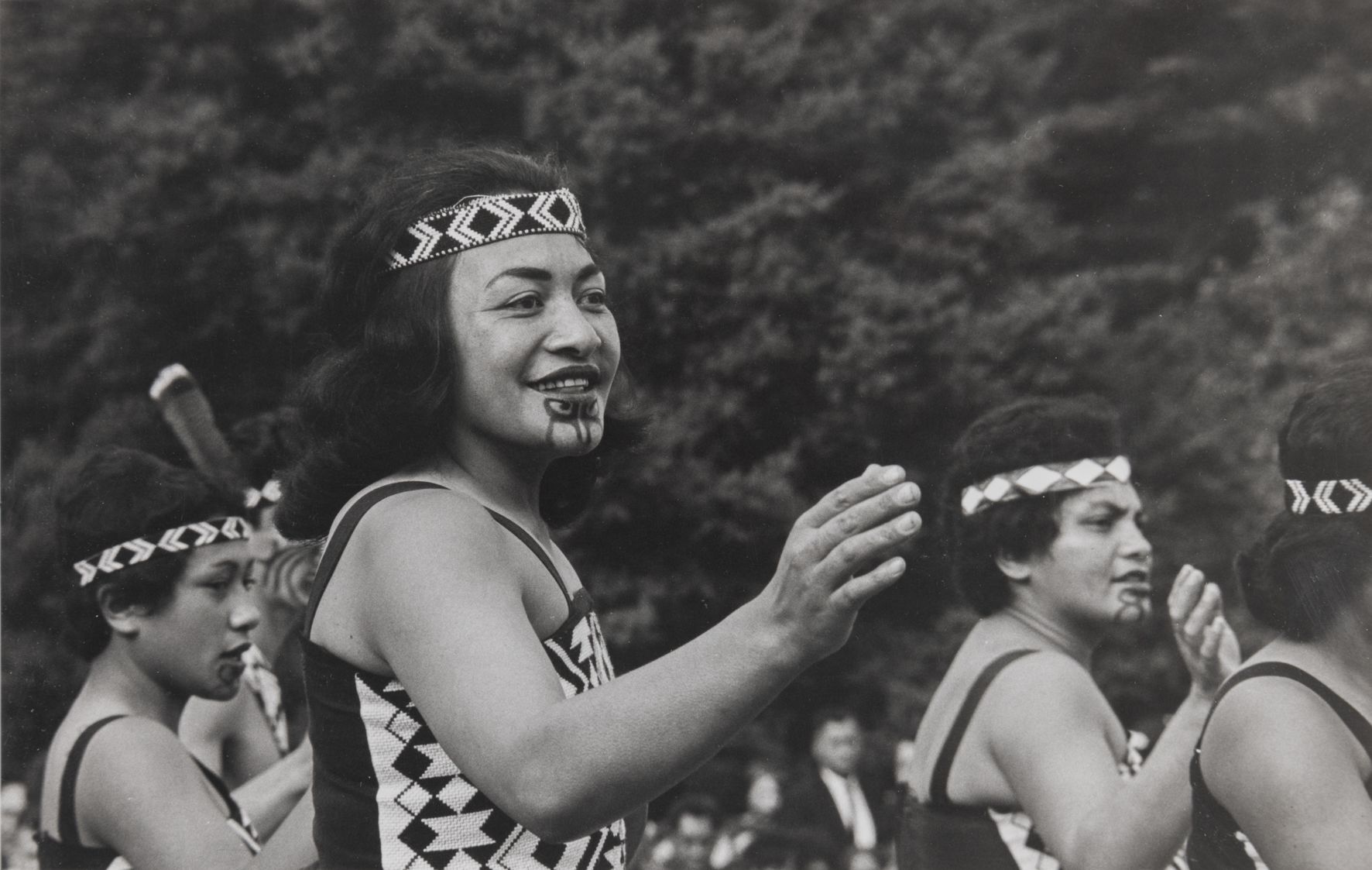
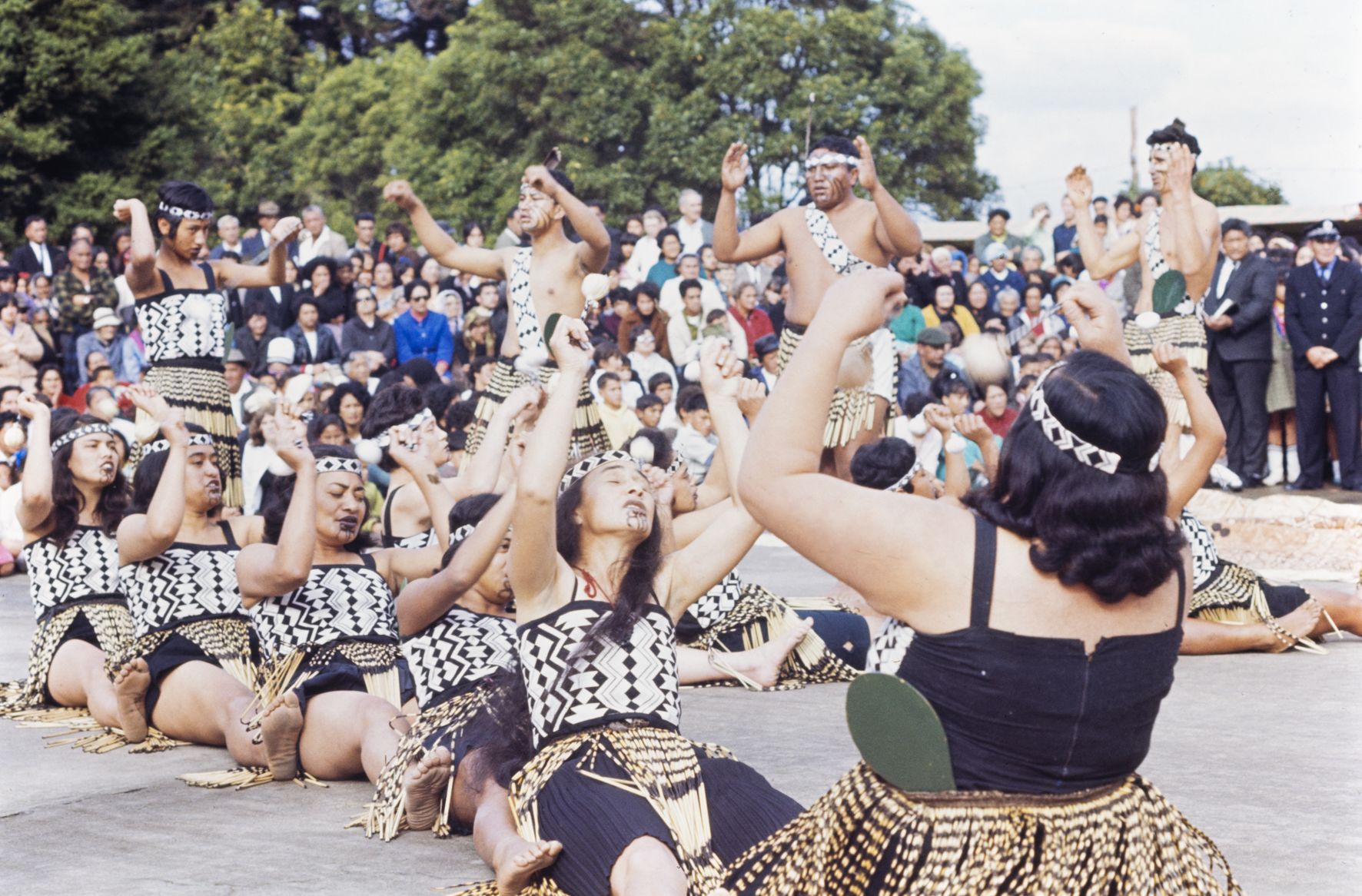

A kapa haka group performing. MAA T.150363.RPT
A kapa haka group performing. MAA T.150363.RPT

A man rising up with strength from a group of performers. Axel has spotted a small detail: while the other dancers have woven headbands, this dancer has made one from paper. MAA P.154979.RPT
A man rising up with strength from a group of performers. Axel has spotted a small detail: while the other dancers have woven headbands, this dancer has made one from paper. MAA P.154979.RPT

This woman has a painted moko kauae (chin tattoo). Axel's portrait emphasises how her emotive expression is part of the movement of the performance. MAA P.154978.RPT
This woman has a painted moko kauae (chin tattoo). Axel's portrait emphasises how her emotive expression is part of the movement of the performance. MAA P.154978.RPT

Performers move in different formations as they tell stories. These seated dancers are representing people in a waka (canoe). MAA T.150575.RPT
Performers move in different formations as they tell stories. These seated dancers are representing people in a waka (canoe). MAA T.150575.RPT
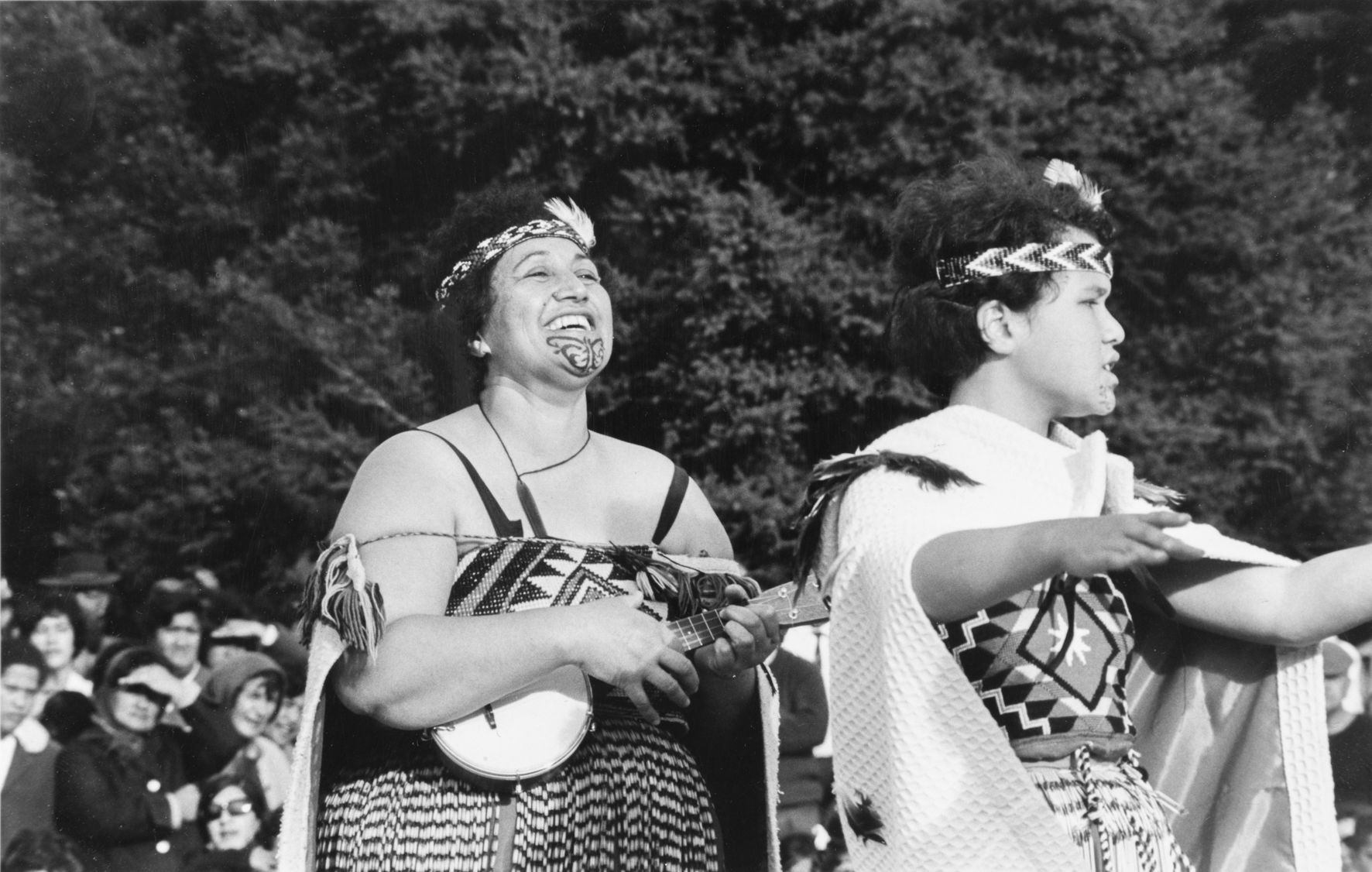
This woman is radiating energy as she smiles and plays a banjo ukulele during a group performance. MAA P.154955.RPT
This woman is radiating energy as she smiles and plays a banjo ukulele during a group performance. MAA P.154955.RPT
Waiata | Song
Singing is also an important part of kapa haka. The women in these photographs are singing waiata, songs which tell stories, share knowledge, and express emotions. Axel’s photographs allow us to feel the power of the waiata as we imagine the music reverberating across the marae.
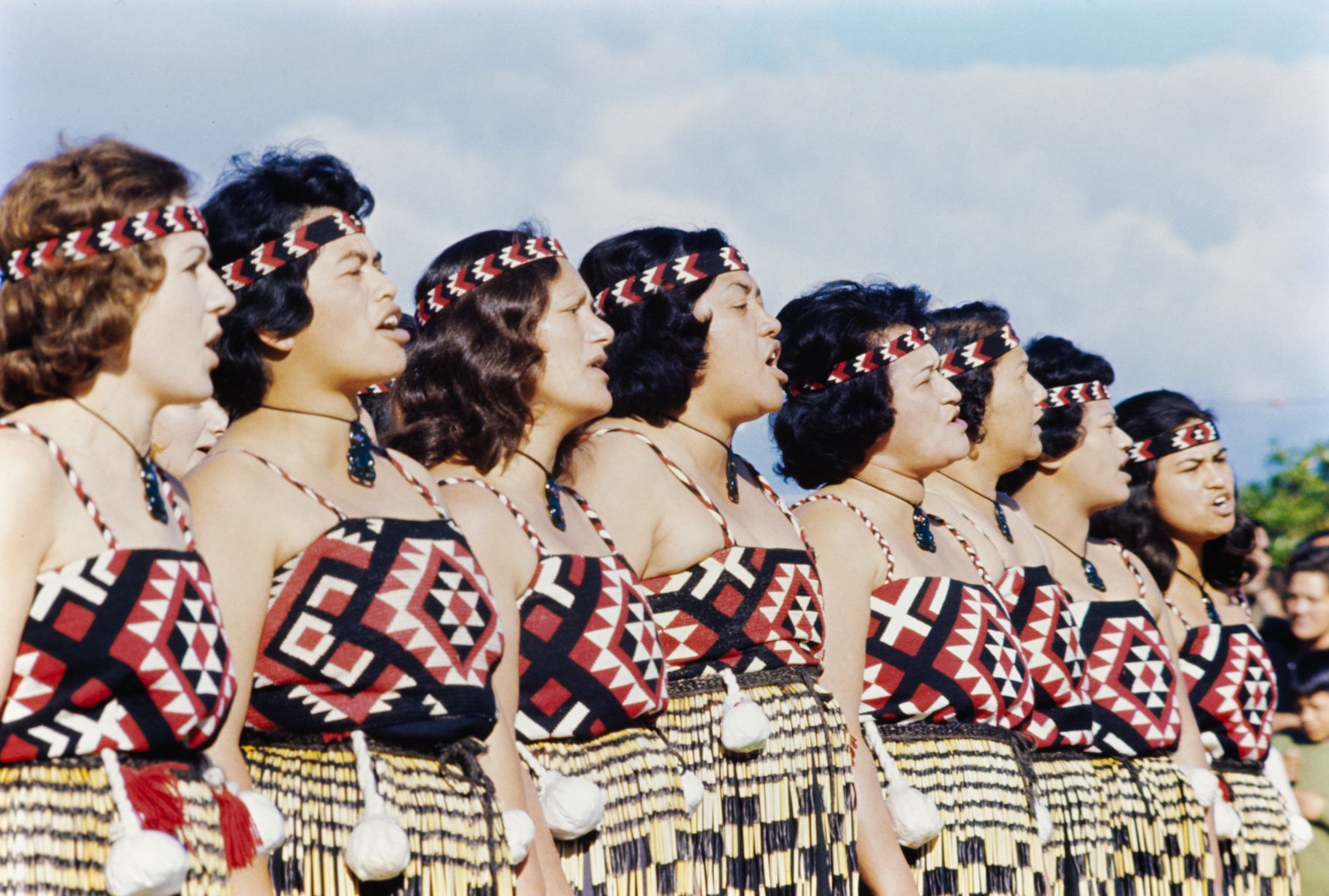
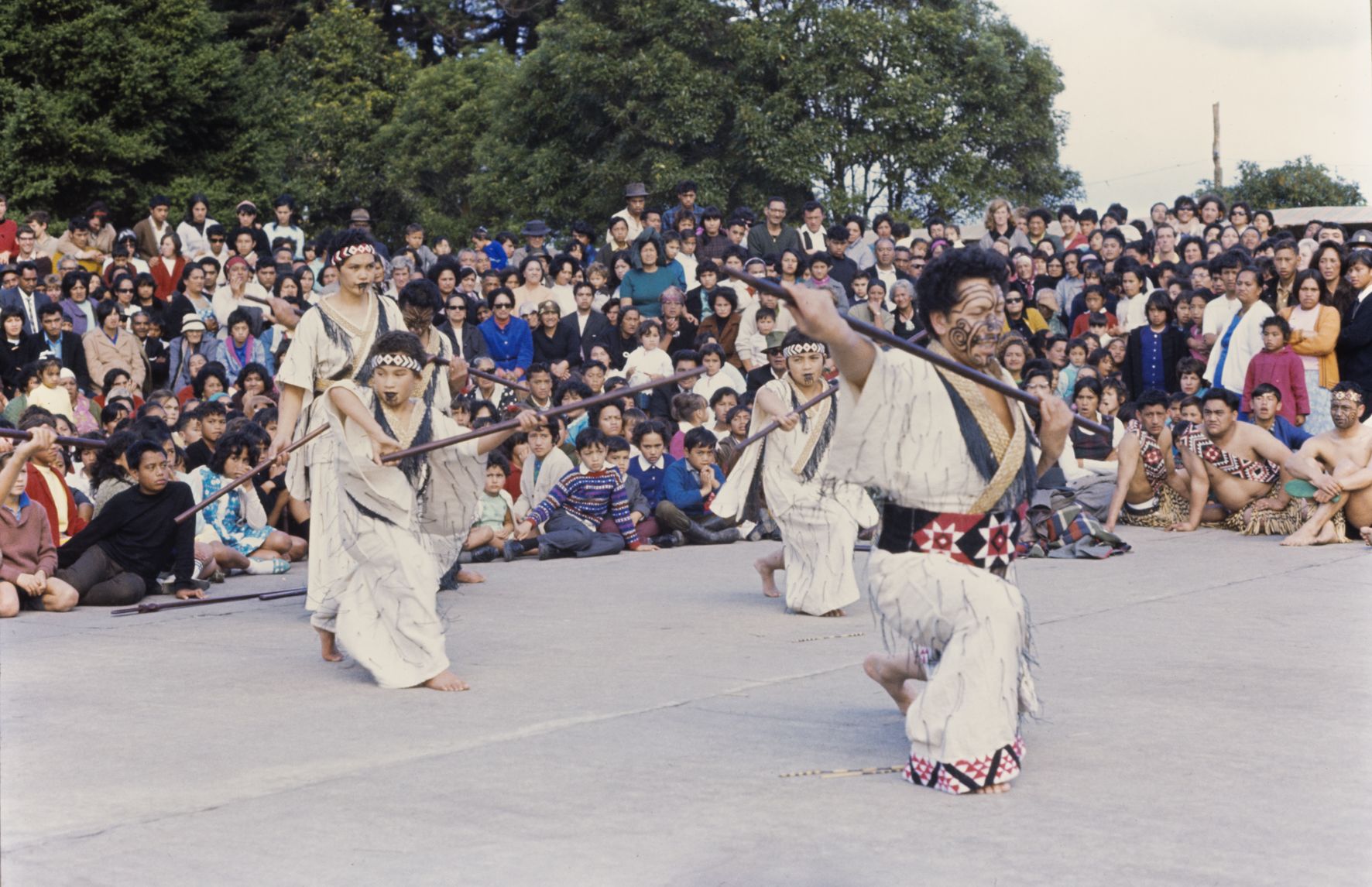
MAA T.150563.RPT
MAA T.150563.RPT
Kapa Haka across generations
Axel's photographs show young performers and those with more experience. Te koroneihana was a chance for children from local schools and groups to display their talents in front of a large audience.
These dancers are performing with taiaha (long fighting staffs).
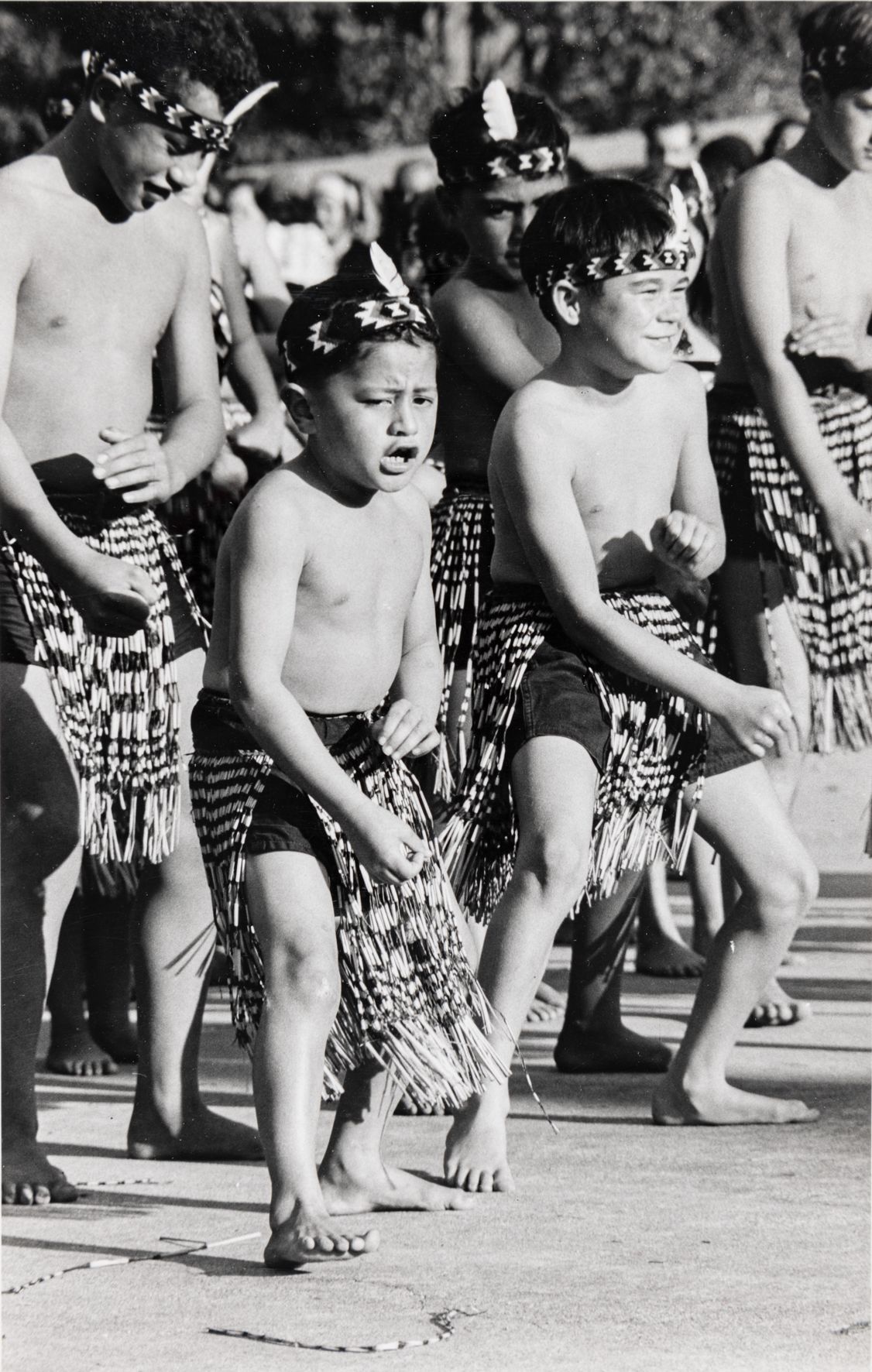
MAA P.154959.RPT
MAA P.154959.RPT
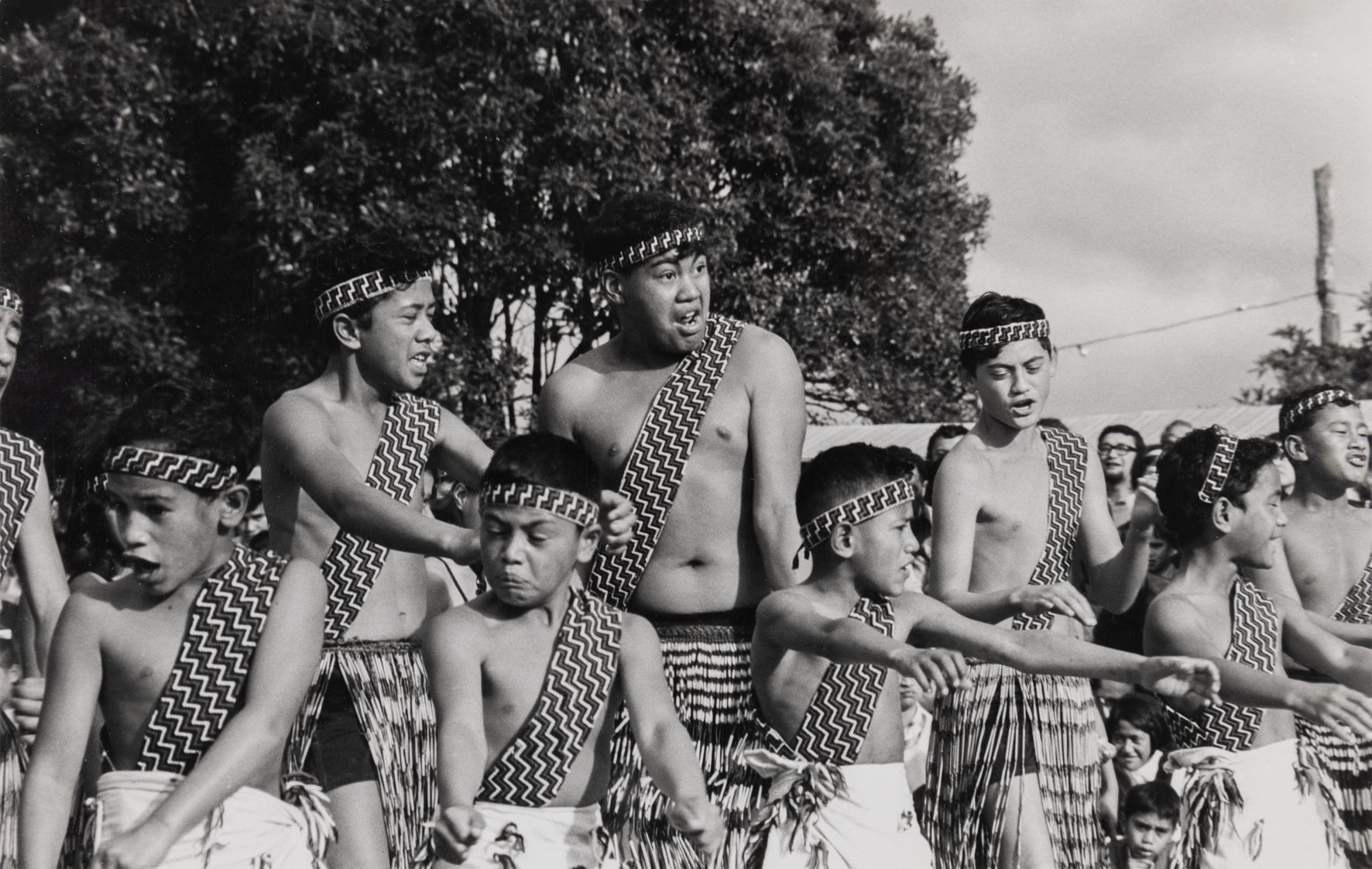
MAA P.154943.RPT
MAA P.154943.RPT
These young dancers from two different groups show the movement and energy of kapa haka.
Axel has chosen moments where the performers’ faces show concentration and excitement mixed with the expressions of the haka.
Axel's photographs invite you to pause with the young performers. Surrounded by much taller dancers, this girl is carefully shaping her fingers as she moves.
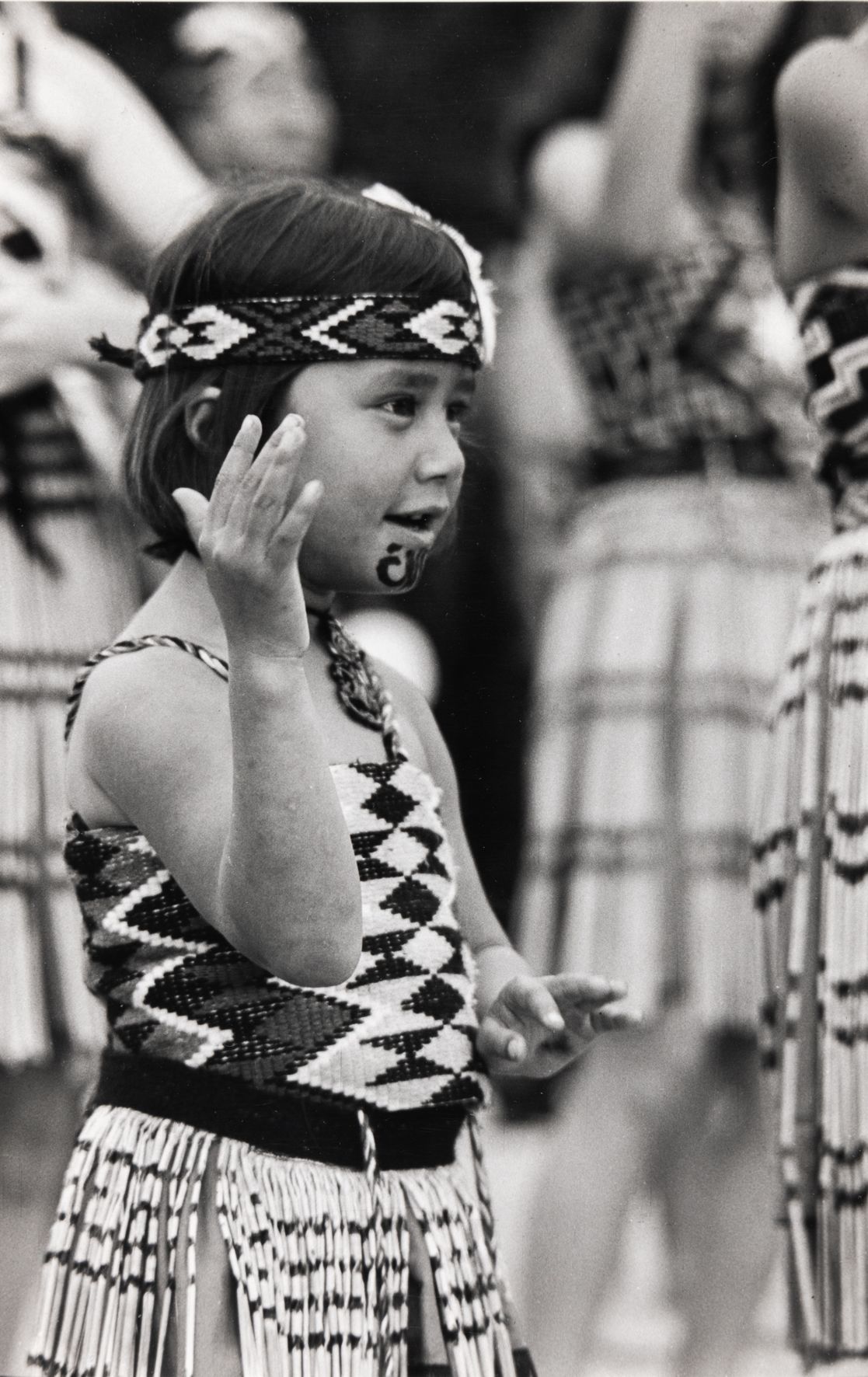
MAA P.154947.RPT
MAA P.154947.RPT
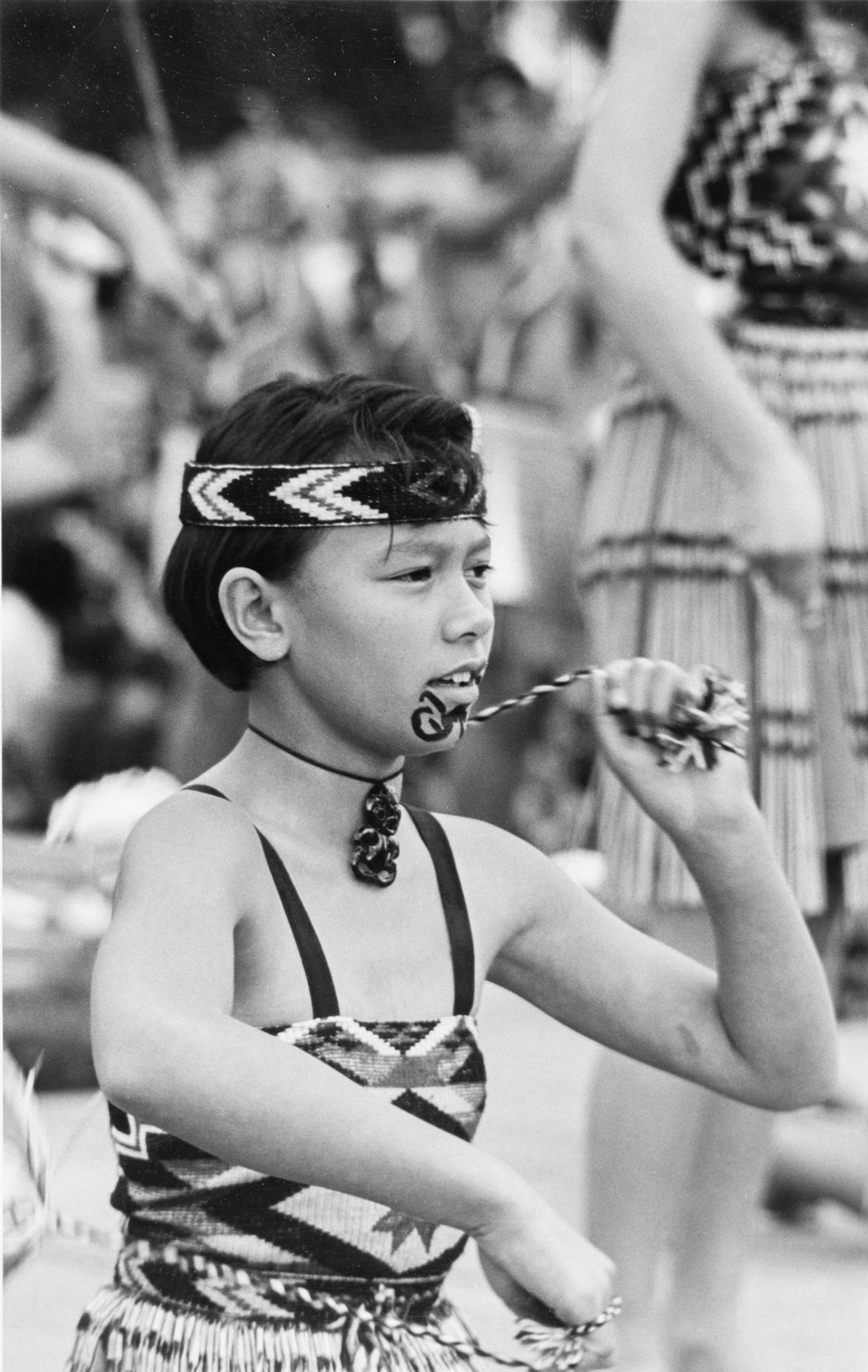
MAA P.154948.RPT
MAA P.154948.RPT
This girl is performing with poi, weighted balls on the end of cords. Although the photograph shows a frozen moment, the slight blur suggests the onwards movement of the poi as she swings her arms.
Axel's photographs invite you to pause with the young performers. Surrounded by much taller dancers, this girl is carefully shaping her fingers as she moves.

MAA P.154947.RPT
MAA P.154947.RPT

MAA P.154948.RPT
MAA P.154948.RPT
This girl is performing with poi, weighted balls on the end of cords. Although the photograph shows a frozen moment, the slight blur suggests the onwards movement of the poi as she swings her arms.
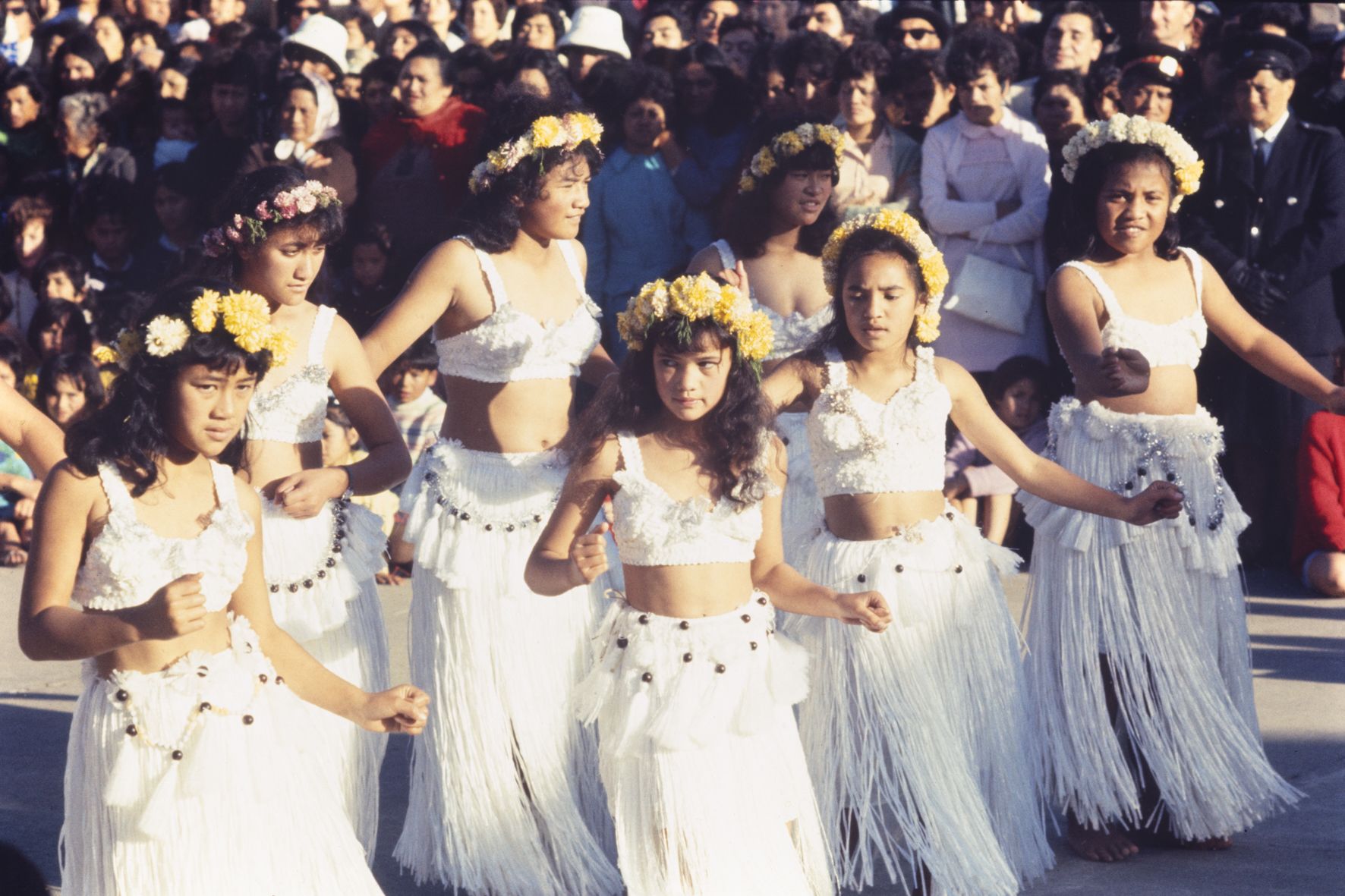
MAA T.150566.RPT
MAA T.150566.RPT
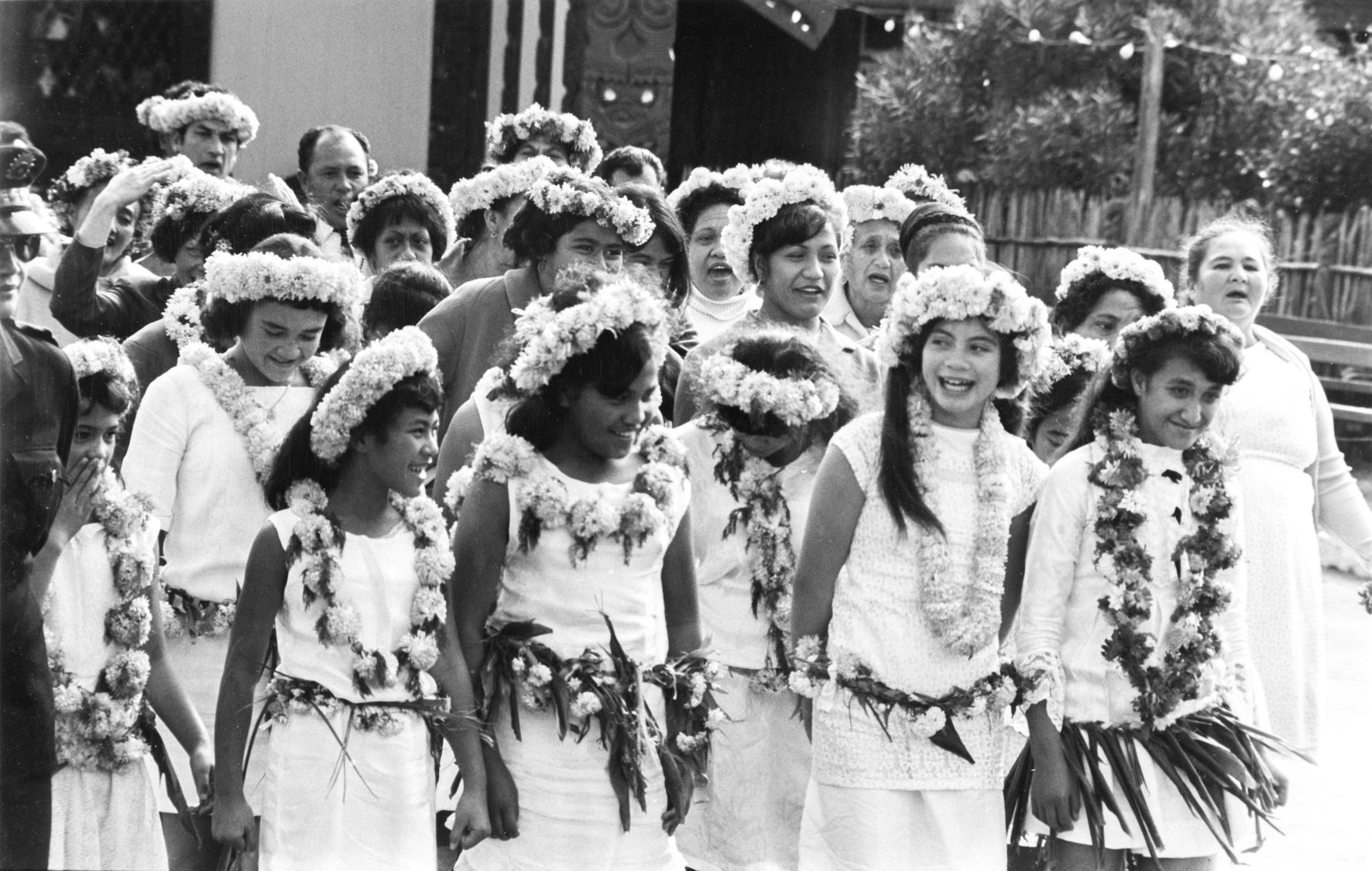
MAA P.154953.RPT
MAA P.154953.RPT
Visiting performers
There were also performances by Cook Islanders, who share histories and ancestors with Māori from Aotearoa New Zealand. Roslyn describes these dancers as from Rarotonga.
These performers could have been visitors from the Cook Islands, but they may have travelled from much closer as many Cook Islanders live around Auckland.
In these photographs, Axel shows two sides of the performers. In the top image, the young dancers look focused and confident.
The performers in the bottom image are smiling and laughing together (perhaps nervously) as they take in the atmosphere of the marae and their large audience.
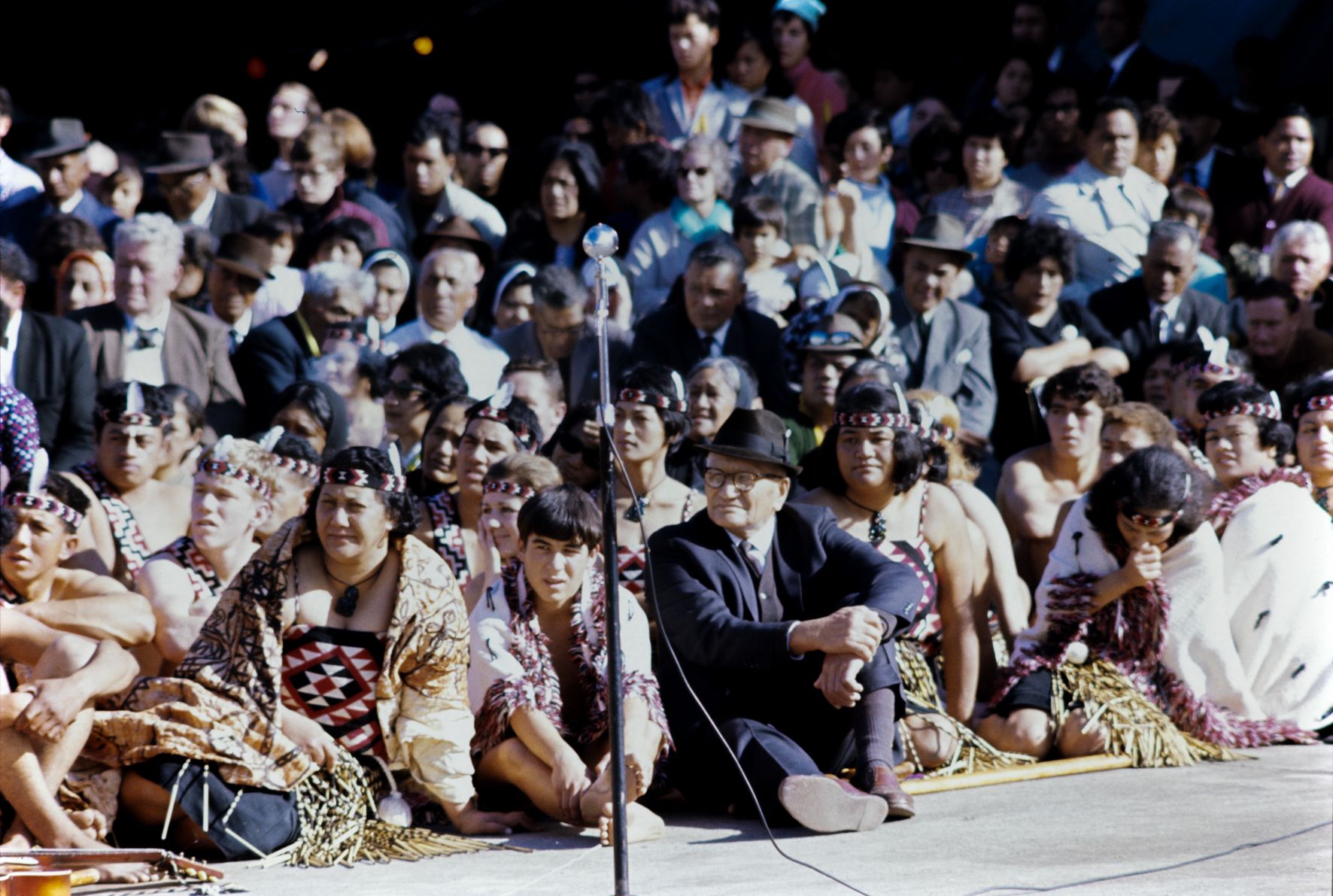
Audience
Axel also turned his attention to the audience which included local people and visitors of all ages.
As well as watching performances, the crowds took the opportunity to relax and spend time together. Axel's photographs show a range of moments from children falling asleep to people in animated conversations.
Click on the images below to see more of the audience. Can you spot Roslyn Poignant in the crowd?
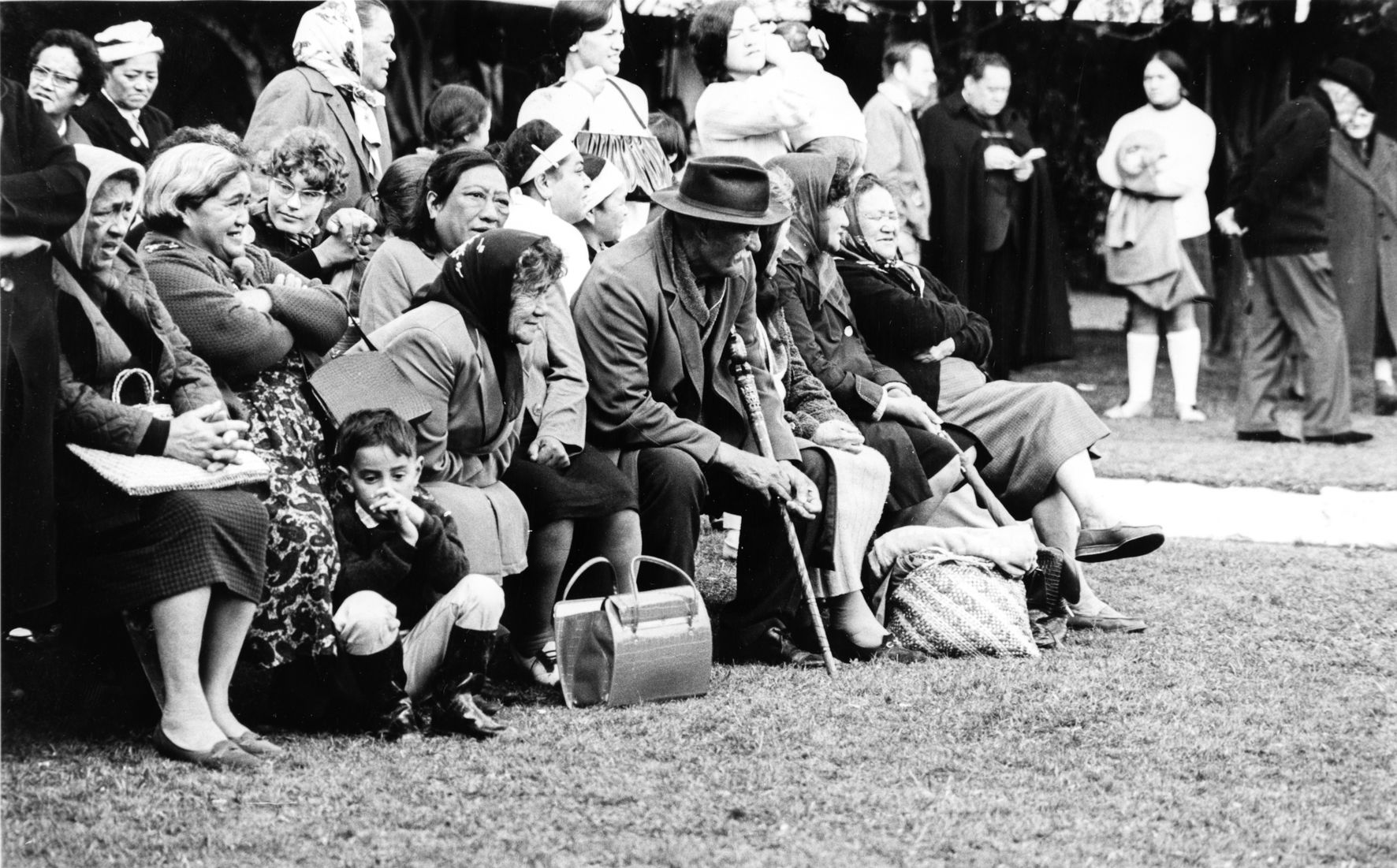
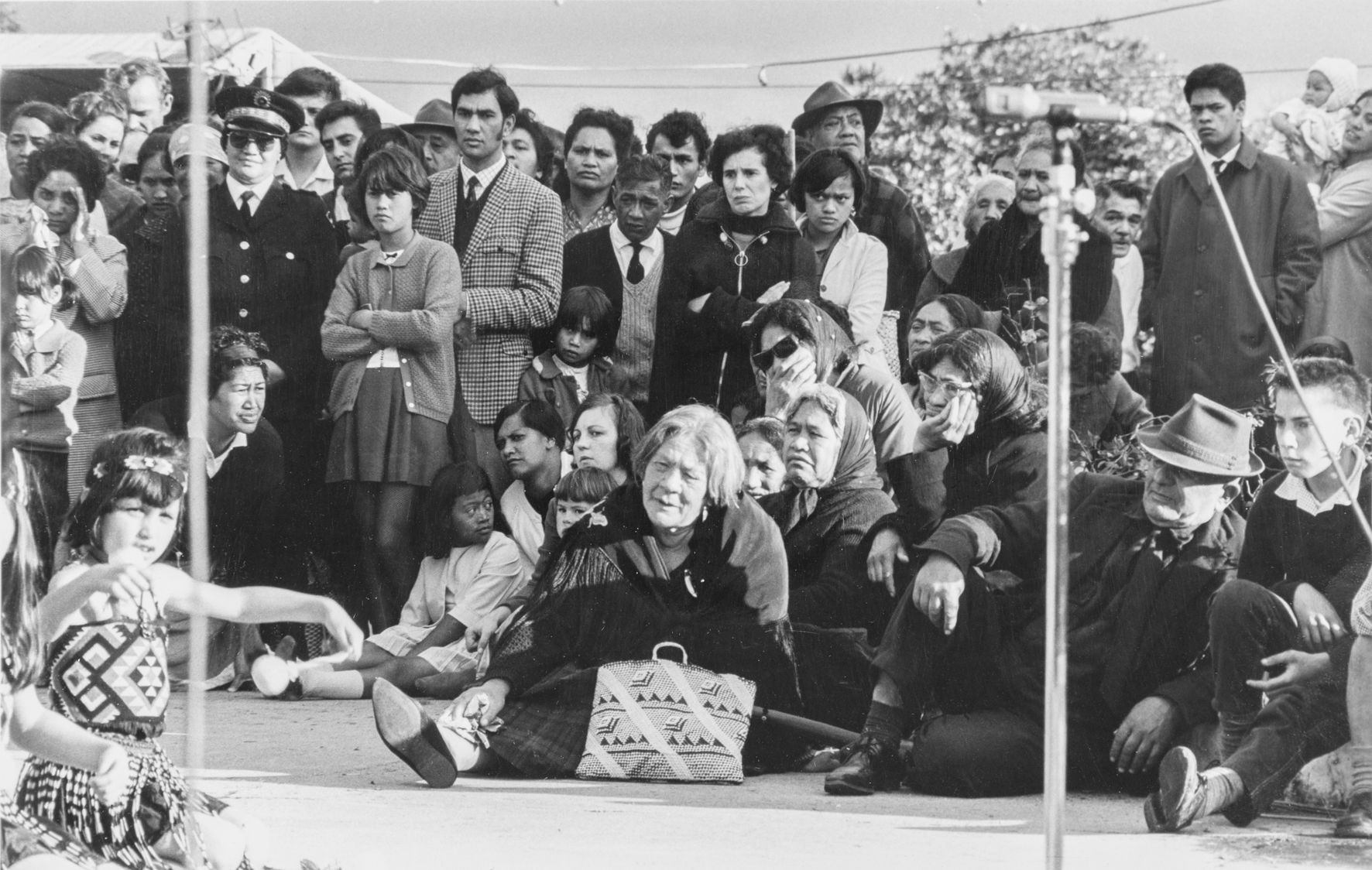
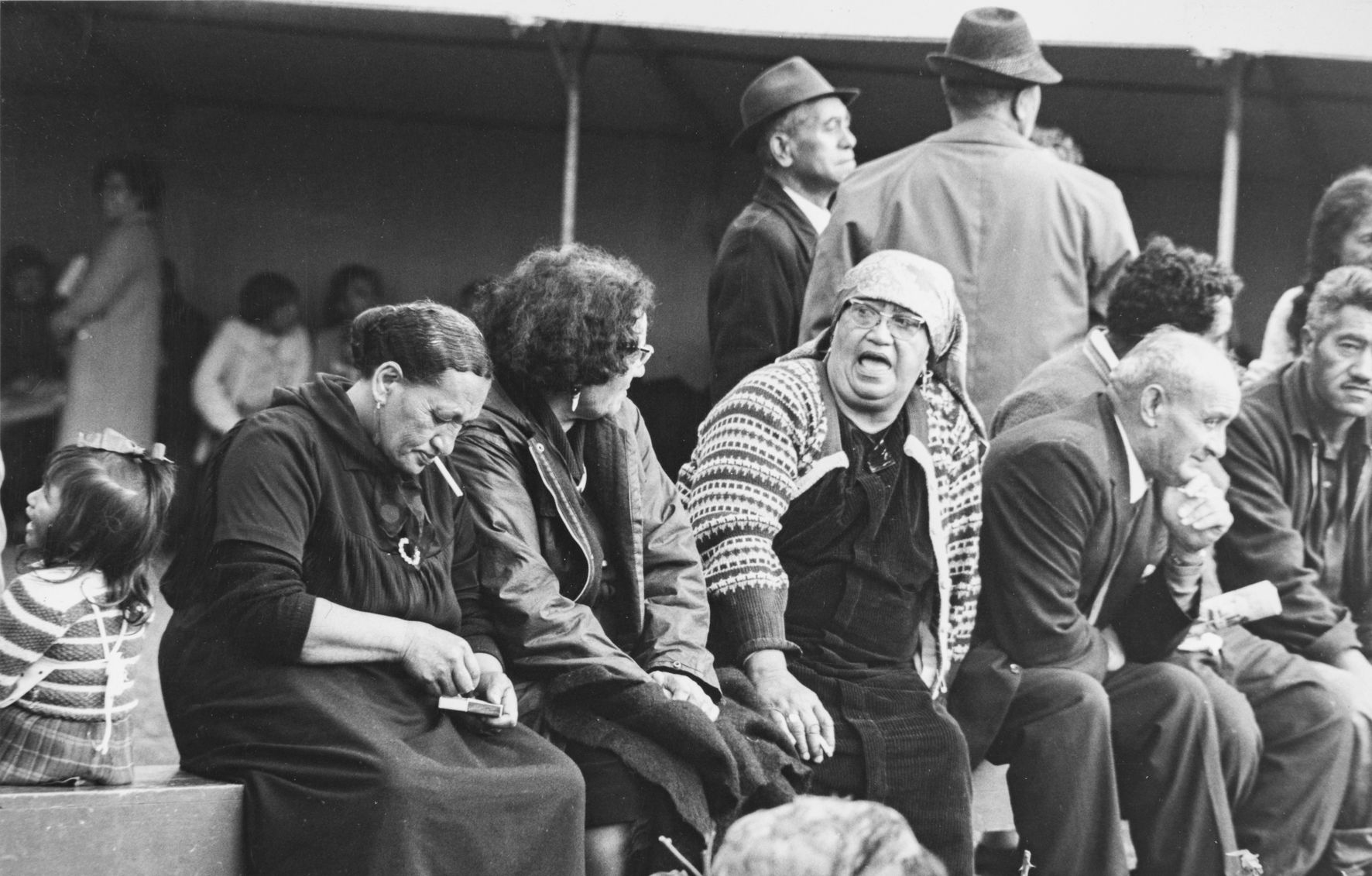

People talking as they sit together. The man in the front row is holding a tokotoko (carved orator's staff) whilst the young boy on the ground looks like he is falling asleep. MAA P.154932.RPT
People talking as they sit together. The man in the front row is holding a tokotoko (carved orator's staff) whilst the young boy on the ground looks like he is falling asleep. MAA P.154932.RPT

A crowd watching the kapa haka performances. The woman sitting at the front has a kete (woven bag) with her. Roslyn Poignant is standing with her arms folded close to the centre. MAA P.154957.RPT
A crowd watching the kapa haka performances. The woman sitting at the front has a kete (woven bag) with her. Roslyn Poignant is standing with her arms folded close to the centre. MAA P.154957.RPT

Two women looking at each other as they talk animatedly. What do you think they are saying? What might the girl on the left be laughing at? MAA P.154961.RPT
Two women looking at each other as they talk animatedly. What do you think they are saying? What might the girl on the left be laughing at? MAA P.154961.RPT
Sharing
Across all of his photographs of te koroneihana, Axel emphasises the relationships between people as they gather together.
In this print, one young performer pauses on the busy marae to help her younger companion tie her kahu (cloak).
Te koroneihana 1969 was not just a celebration of Te Atairangikaahu as Māori Queen, but also a chance for people to gather, share knowledge and performances, and support one another.
Axel and Roslyn bequeathed their collection to MAA to make it more accessible. They wanted to share their photographs and knowledge and encourage people to use the images in their own way.
You can see and download more of the Poignant collection by clicking here and searching for 'Poignant'. If you would like to share any knowledge about the images please contact the MAA photographs team at jd324@cam.ac.uk.
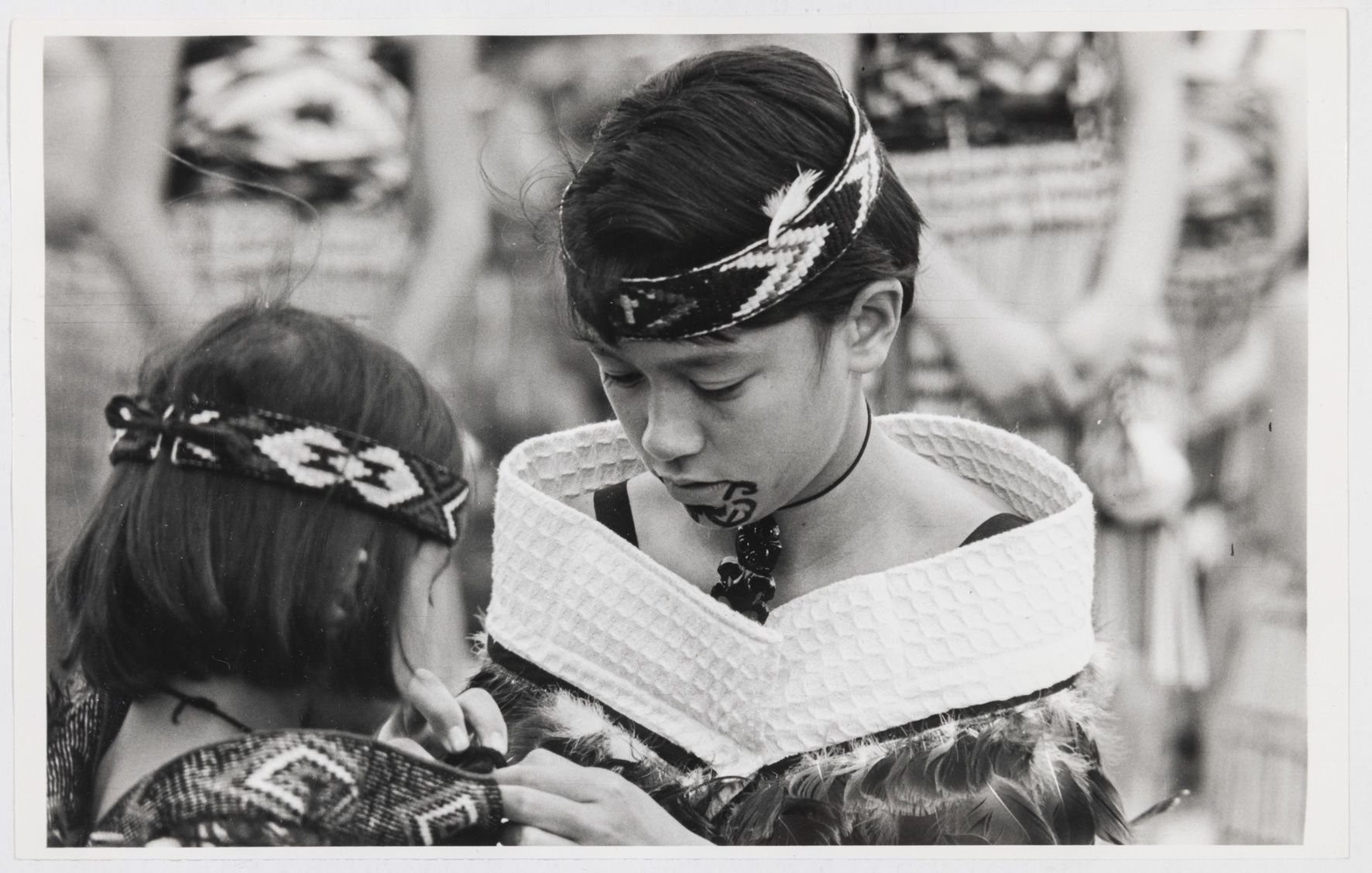
MAA P.154950.RPT
MAA P.154950.RPT
Find out more
Click on the links below to read more about the Kīngitanga (Māori King Movement), pōwhiri, and kapa haka by Māori scholars in Te Ara - The Encyclopedia of New Zealand.
